Hotspots for pike fishing in rivers have a lot in common with hotspots for pike fishing in lakes – however they differ in a few essential ways. In the following article, we are going to look at these differences in detail. For this purpose, we will go through the results of a study in which northern pike were caught, tagged, released and subsequently tracked over a longer period of time. The experiment was carried out in the river Yser (on the Belgian territory).
But one thing we can already tell you in advance is that pikes do like rivers. So that depending on the conditions of the given environment, they can be found in large numbers. A fact that is often neglected when choosing the best place to catch a big pike.<
-

Finding Fish The Smart Way – The Pike
Download 40 pages now for free
This article is an excerpt from:
Reviews ( 64 )
Where to find pike in a river?
Aim of the study
The study focused on two main questions:
- Which habitat do pike prefer in a river?
- Where do pike hide in rivers?
For this purpose, river characteristics (i.e. those of the main stream, tributaries and branches as well as flow and bank conditions) were examined to determine whether – and if yes, up to what degree – they were crucial in the territorial selection of pike.
For the study 15 adult pike were removed from the water equipped with a transmitter and released again. In the period from November 2010 to May 2011, data on the actual location of each individual were collected in a two-day rhythm. The accuracy could be determined to ±4 m. Thus, a total of more than 800 measurements were available at the end of the experiment.
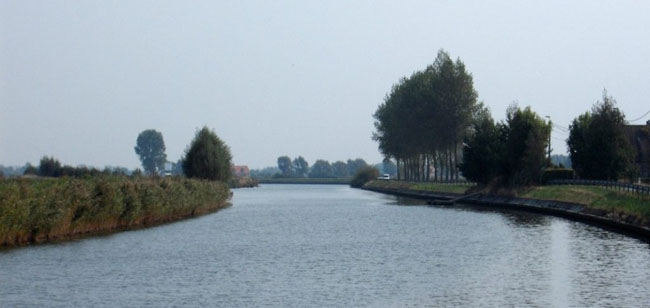
Study area: The canal system of the Yser
The Belgian part of the Yser River is about 44 km (27,34 mi) long. It is 2.5 m (8.2 ft) deep on average, with 5 m (16.40 ft) at the deepest point. The river width varies between 8 (26,24 ft) and 25 m (82 ft). The Yser carries brackish water at its estuary, as the river flows into the North Sea. Just before the river mouth there is a 370 x 1,000 m (404 x 1094 yds) basin with a depth of 7 m (23 ft), which the river-dwelling pike can reach without any obstacles.
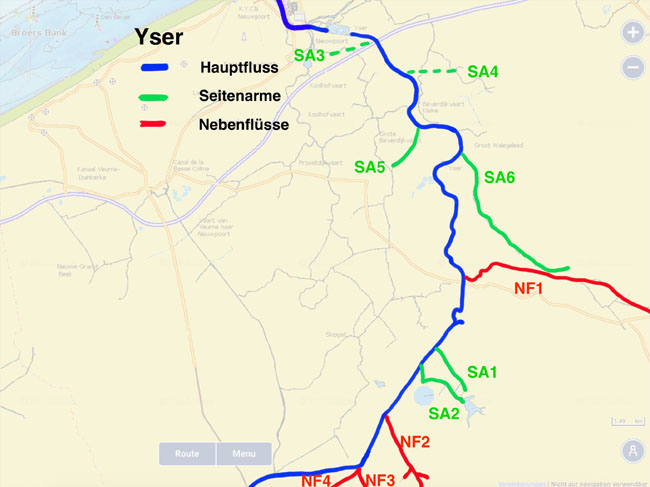
The sidearms were all very shallow. The four artificial arms were created since 2002 and exhibit the same vegetation as the other side arms, the main stream and the tributaries. To the left and right of the shore there were extensive reed beds including lush underwater vegetation all around.
The bank of the Yser
Eight different riparian habitats could be identified in the study area of the canal system of the Yser. They mainly differed in the vegetation on the bank itself and in how the bank was formed or fortified.
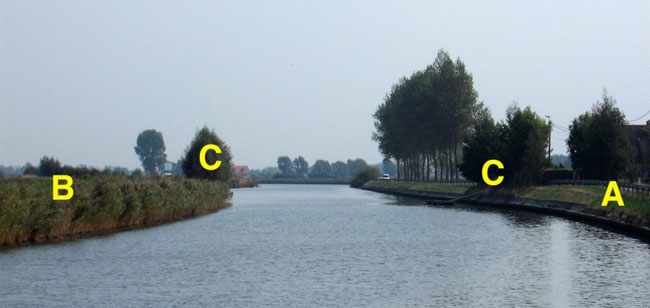
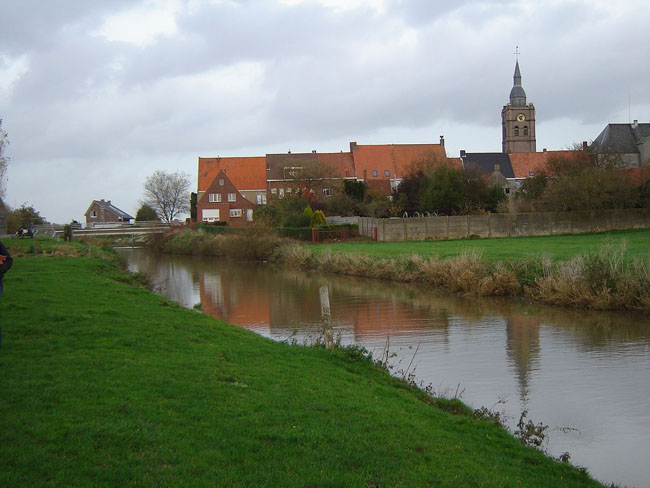
Bank area and reinforcement
40 % of the banks were left natural, while 60% of its area had been artificially worked and paved. This is because the canal system drains the surrounding fields and carries away rainwater. If you look closely at both of the preceding pictures, you can clearly see the differences between the individual riparian areas. The fortifications are necessary so that the bank is not eroded. The three bank areas or fortifications could be further differentiated into:
- Artificial stabilization: Banks straightened and reinforced with concrete.
- Artificially filled areas: The bank was protected with wooden piles in the front. The piles were driven into the ground 0.7 to 2.5 m (2.3 to 8.2 ft) away from the bank. They protect the shore from currents and waves. Between the piles and the bank mainly reeds had spread. There were all types of vegetation density visible – from loose to densely overgrown.
- Near-natural river banks: More or less natural and overgrown with reeds. The reed belts were partly broken up by trees and shrubs.
-

Finding Fish The Smart Way – The Pike
Download 40 pages now for free
This article is an excerpt from:
Reviews ( 64 )
Martin
Hi Garry, i saw that contacting Jens has solved your problem. As written in the Order Mail, download is limited to 3 times. We introduced the limit to prevent fraud. However, if you lose your eBook in the future, please email us and you will of course get new downloads. Martin- Rated 1 out of 5
Garry Gregg
I bought the book online, but try as I might it would not save on my iPad mini 3, from the small amount i was able to read it looked very good. I was given a link that was promised to ALWAYS be available to me, but this was not the case! I wanted to learn how to find Pike in Lough Neagh, the largest lake in the U.K. but I can only fish it blind, useless. Make sure you can save this book BEFORE you buy. - Rated 5 out of 5
Andreas Eden
Unlike other reviewers, I am NOT in favor of shortening or streamlining. The detailed but not generalized aspects provided are scientifically sound and outline the respective topics exceedingly well. Looking forward to more of this, and keep up the great work! Martin
Hi Claus, Thank you for the info about the Tolino. So far, there have been no problems with the popular Android or Apple smartphones and tablets. We’ll take a look at it. Did the upload via the Tolino web reader not work either? Regards Martin- Rated 2 out of 5
Claus Erhard
The content is decent – maybe a little too detailed. Note: I bought the e-book version. The fact that you can’t print it out is alright (this option would be great though). However, I cannot read the PDF file on my Tolino. I uploaded it 1000 times, and nothing is displayed. So reading is only possible on the PC. Too bad! - Rated 5 out of 5
Dieter Gundacker
Highly recommended, lots of fascinating information. It is not easy to put the book down once you have started reading. - Rated 5 out of 5
Kurt Sattler
Great book. I also have “The Pikeperch”. Both are highly recommended. - Rated 5 out of 5
Mirko
A very well written book. - Rated 4 out of 5
Holzblinker
Among the advantages: -statistics and their interpretation -written in a simple and understandable way Among the disadvantages: -advertising -A lot of generally known information - Rated 3 out of 5
Bruno
Exciting content (****) with a tendency to be long-winded (**) - Rated 5 out of 5
Stefan
The book keeps what it promises. An all-around great book that stands out from the rest. The purchase was worth it! - Rated 5 out of 5
Fischfreund
A truly superb book. I also own the book on pikeperch and have to admit that they are two completely different books. There are very few overlaps, so I never had the feeling that I already knew a passage in the book. For this reason, I can unreservedly recommend the pike book. It was so much fun reading it and gradually learning more about the pike. - Rated 5 out of 5
Paul KraUS
An elaborate approach to the behavior of the fish to conclude your fishing behavior, etc. I also like that other professional opinions are taken into account and partly questioned and analyzed. You can learn a lot to save the one or the other unsuccessful day. Thank you! - Rated 5 out of 5
barney1at
I am impressed with the book! I have read many books about fishing, and this was by far the best. It reflects not only the experiences and interpretations of the authors but uses scientific studies as a basis. Some of the findings knocked my socks off, e.g., the distance of attention of the pike. Strong recommendation for anyone who wants to improve their pike fishing skills! - Rated 5 out of 5
Michael Hügel
Sehr gutes Buch hat mir weitergeholfen das Leben des Hechtes zu verstehen. - Rated 5 out of 5
frankadam67
Sehr, sehr schönes Buch mit vielen Informationen! Nun muss ich nur noch alles in die Tat umsetzen! Danke für das gut ausgearbeitete Buch! - Rated 5 out of 5
Thomas Asamer
Bin gerade am Lesen des Buches. Sehr interessant und informativ. Werde meine Hechtfänge sicherlich noch um einiges steigern können mit dem KnowHow des Buches! Weiter so!? - Rated 5 out of 5
Andre Scholz
Hallo Zusammen, ich kann nur sagen, das habt ihr wirklich sehr gut gemacht! Wahnsinnig informativ, Super gegliedert und mit vielen guten Tipps behaftet. Das Zanderbuch war schon ein Knaller!!! Ich freu mich schon auf das Barschbuch. Und nebenbei erwähnt, die Videolektionen Köderkurs 1 sind ebenfalls Mega spannend! Bitte weiter so machen…. Petri Andre - Rated 5 out of 5
Manfred Parbs
Ich finde die Bücher ” Der Hecht ” sowie ” Der Zander ” sind für erfahrene Angler und auch für den Anfänger sehr lehrreich und somit auch informativ gestaltet. Auch die vielen Tips haben mich persönlich schon so manches mal vor einem Schneidertag bewahrt. Ich besitze zudem auch noch das Buch ” Der grosse Echolotratgeber ” . Dieses Buch liefert gute Erklärungen für die Funktionen und Einstellungen von Echoloten. Desweiteren besitze ich auch noch zwei Angelkurse: zum einen Köderfarbe und zum anderen Der Deeper. Beide Kurse sind mit sehr viel Informationen und verständlichen Erklärungen gespickt die jederman sehr gut verstehen kann. Freue mich schon auf weitere Bücher. Ein grosser Dank als auch ein grosses Lob an das Fischfinderteam. Petri Heil & immer dicke Fische Manfred Parbs - Rated 4 out of 5
Fabius Voigt
Klasse Buch! Fundiertes Wissen auf gute Art und Weise zusammengefasst und übermittelt, damit Angler ihren Zielfisch besser verstehen. An einigen Ecken im Buch, wäre ein weitere genauere Ausarbeitung toll gewesen (wurde vom Autor aber selbst bemerkt und begründet). Desweiteren beruhen die meisten Angaben (90%) von Hechten aus Seen und leider nur sehr wenig aus Flüssen. Das sind meiner Meinung nach die einzigen Sachen die fehlen, aber ansonsten würde ich es als Bereicherung für jeden Angler beschreiben! - Rated 5 out of 5
Julia
Genau wie das Zanderbuch wieder der totale Hammer! Wobei für mich die Voraussetzungen etwas anders waren: Während ich meine Zanderfänge wirklich mal dringend etwas ankurbeln musste, fing ich alleine im vorigen Jahr 47 Hechte, es ging hier also eher um Optimierung. Und das ist voll gelungen! Massen von überaus hilfreichen Forschungsergebnissen, Statistiken und Tafeln. Ich bin beim Spinnangeln bisher zu viel gewandert und habe die einzelnen Spots zu kurz beangelt, das weiß ich jetzt. Und so ganz nebenbei ist mir jetzt noch klar, weshalb man in einigen durchaus interessanten Seen in meiner Umgebung von Juni bis Januar partout keinen Fisch fängt. Habe nämlich so einiges über die Schichtung gelernt, und dass eine Abkühlung eben nicht automatisch gleich Verbesserung bedeutet. Klasse! Her mit dem nächsten Buch bitte! - Rated 5 out of 5
Pascal Schlenker
Top nicht das letzte Buch für mich…. - Rated 5 out of 5
Heinz-Otto Schoel
Auf den 50zig Seiten, die ich bis jetzt gelesen habe ,bin ich begeistert. Aber die anderen Bücher über das Echolot und dem Zander waren sehr lehrreich. Weiter so. Freue mich schon auf das Barschbuch. - Rated 5 out of 5
Andreas Hillers
Modernes Fischen – Der Hecht. Ein sehr gut geschriebenes Buch. Bin begeistert von den vielen tollen Hilfestellungen. Sogar als erfahrener Angler kann hier bestimmt jeder noch den ein oder anderen Tipp für sich nutzen. Vielen lieben Dank, und weiter so für vielleicht weitere noch nicht erschienene Bücher über den Aal, Barsch, Karpfen etc. - Rated 5 out of 5
Stephandargel
Das Buch ist einfach nur klasse super beschrieben sehr verständlich beschrieben kann ich nur weiter empfehlen ? gebe dem Buch und dem Autor ne 1+ - Rated 5 out of 5
Rolf Wilde
Sehr praxisnah und auch mit viel Hintergrundinformationen gefülltes Buch. Ich habe über die Feiertage die ersten Seiten verschlungen. Sehr viele Details die ich noch bis zur Schonzeit versuche umzusetzen. - Rated 5 out of 5
Blankmaster
Die Referenz. Umfassend, kein blabla, über den Tellerrand hinausschauend, fundiert, sinnvolle und gut gemachte Graphiken, und das Ganze zu allem Überfluss auch noch unterhaltsam geschrieben. Als bekennender Wenigleser habe ich das Buch innerhalb von 3 Tagen einmal komplett durchgelesen. Uneingeschränkte Kaufempfehlung. - Rated 5 out of 5
Rudolf Knopf
Endlich ein Buch, welches man durchaus als Fachliteratur beschreiben kann. Es werden viele Erfahrungen, welche ich beim meiner Suche nach dem Hecht gemacht habe, bestätigt. Ebenso ist auch sehr viel Neues für mich in dem Buch, was ich bisher in meiner vieljährigen Anglerlaufbahn so nicht gewust habe. Absolute Kaufempfehlung. - Rated 5 out of 5
markus s
Großes Kompliment zum Buch! Ich fische seit meiner Kindheit auf Hecht (und das sind schon mehr als dreißig Jahre) und ich muss sagen, es gibt keine interessantere Lektüre zum Hecht! Viele eigene Theorien finde ich hier bestätigt, aber noch besser: Dieses Buch bietet auch wirklich neue Ansätze! - Rated 5 out of 5
Mitja
Beeindruckende Leistung von Euch, ein so komplexes Thema derart runterzubrechen, daß man das Buch in einem Rutsch durchlesen kann, ohne sich dauernd zu fragen: „verdammt, wovon labern die denn da?“ Superspannend: die Trophieklassifizierung und die Sache mit der Sprungschicht! Ich sehe meine Gewässer jetzt mit ganz anderen Augen und auf einmal kommen mir die 150 Kracher für das Anaconda-GTM gar nicht mehr so übertrieben teuer vor! Und weil es mir so gut gefallen hat, zieh ich mir morgen direkt das Echolot-Buch rein, das mit der Postbote heute morgen in den Kasten geworfen hat….für das Barschbuch hätte ich übrigens gerne einen Gutscheincode 🙂 Danke! Ich freu mich auf weitere spannende Lektüre aus eurem Stall… - Rated 5 out of 5
schoenfeld.oli
Absolut feine Lektüre. Ich gehe nach Lesen des Buches ganz anders ans Wasser. Zwischendrin etwas fader Stoff, der aber einfach dazu gehört. Dafür sind die spannenden Themen so spannend, dass ich nicht im Sitzen lesen konnte. - Rated 5 out of 5
Robert Häusler
Die beiden Autoren Martin Jacobs und Jens Biegemeier sind der Hammer. Ich habe schon viel gut recherchierte Medizinbücher gelesen und oft haben sie mir zu mehr Erfolg verholfen, dass das auch mal Zum Hechtangeln möglich wird ist großartig. Danke an dieses Meisterwerk! Ich habe mit dem Wissen aus dem Buch jetzt schon meinen Angelrekord auf Hecht gebrochen und bin mir sicher da geht noch was. Danke für eure Arbeit, den Fleiß und die Begeisterung die ihr geleistet haben müsst dieses moderne Fische finden für uns und unsrer Seekrokodiele zu ermöglichen. Petri Robert Häusler Martin
Edi, wir danken Dir und wünschen euch gute Fänge. Petri Martin vom Fischfindertestteam- Rated 5 out of 5
Edi Brader
Das beste Buch über die Fischerei auf Hecht, das ich bisher in Händen gehalten habe! Sehr ausführlich und praxisnah wird dem Einsteiger in diese Fischerei veranschaulicht worauf es ankommt und auch der eingefleischte Hechtprofi kann noch sehr viel Nützliches aus diesem Buch herausholen! Absolut EMPFEHLENSWERT! Besonders möchte ich das äußerst nette Team loben! Bei meiner Bestellung ging etwas schief, ich bekam zwei anstatt nur einer Ausgabe. Nach Rücksprache bedankten sie sich für die Information und sagten mir, dass das Zurücksenden ohnehin zu teuer wäre und ich das zweite Exemplar auch behalten dürfte. Danke Jungs, ihr habt gerade einem befreundeten Jungangler eine große Freude gemacht, ich werde euch auf jeden Fall weiterempfehlen! Macht weiter so! Petri Heil Edi Brader - Rated 5 out of 5
lusox
Prima Lektüre , wirklich zu empfehlen ! Besonders gut fand ich das Kapitel mit der Ködergröße. Ebenso das Kapitel mit den Standplätzen und die Rolle der Vegetation Ich habe viele Anregungen daraus mitgenommen und bin mal gespannt wie sich meine Hechtfänge verbessern. Weiter so ! - Rated 5 out of 5
Stefan Fischer
Ich finde, das Buch “Der Hecht” lüftete viele Geheminisse. Hatte das Buch “Der Zander” auch, alles top tock. Hoffentlich folgt das Buch auch über den Barsch, evtl. Waller/Wels. Mir fehlt die Anglerpraxis. Das Buch “Das große Echolot” ist auch klasse. Weiter studieren!!! ^^ Namaste und Petri Fischer Stefan - Rated 5 out of 5
Lasse Wiedenhöft
Wie schon beim Zanderbuch werden für alle denkbaren Situationen (Jahreszeiten, Gewässer, Wetter etc.) hilfreiche Tipps zur Strategieverbesserung gegeben. Dabei helfen die Ergebnisse aus diversen Versuchen und Tests den Hecht und sein Verhalten besser zu verstehen. Gerade die wissenschaftliche Begleitung in Kombination mit eigenen Erfahrungen hat mir schon nach wenigen Kapiteln neue Ideen vermittelt! - Rated 5 out of 5
Johann Burgstaller
Wie bereits “Der Zander”, ist auch die Hechtausgabe wieder jeden Cent wert. Ein must-have für jeden Raubfischangler. Tolle Studien, jede Menge neue Erkenntnisse und enifach zu lesen. Na dann nichts wie auf zum “Der Barsch”! - Rated 5 out of 5
Barschhunter
Das Buch ist Euch wirklich super gelungen!!!!! Es ist sehr informativ und es ist für jeden etwas dabei, ob man nun Anfänger im Angeln ist oder ein erfahrener Angler ist. Man kann immer noch was dazu lernen. Für mich persönlich war das Kapitel “Jagd und Beute” sehr interessant und spannend und möchte deswegen keine einzelnen Punkt hervorheben. Macht weiter so und ich freue mich schon auf Euer nächstes Buch “Modernes Fische Finden Der Barsch” mein persölicher favorite Fisch. Dickes Petrie Barschhunter - Rated 5 out of 5
Andre Scholz
Genauso spannend und aufschlussreich wie das Zander Buch! Wenn man seinen Zielfisch besser verstehen möchte und mehr Erfolg haben will, kommt man nicht um das Buch herum! Allein die Thematik um die Wassertemperaturen, einfach irre! Volle 5 Sterne und Danke für so viel geilen Input! Petri Andre - Rated 5 out of 5
Andreas F.
Sehr schön finde ich die Aufmachung des Buches und die logisch aufbauenden Kapitel. Das Lesen macht viel Spaß. Hier treffen die Autoren genau den richtigen Ton, einen “mitzunehmen”, obwohl die Grundlagen ja wissenschaftlich/biologisch sind. Es ist nicht einfach, plausibel und allgemein verständlich, verschiedene wissenschaftliche Erkenntnisse miteinander zu verknüpfen und hieraus die passenden Schlussfolgerungen zu ziehen. Das ist jedoch durchaus gelungen. Abläufe in der Natur sind nie statisch sondern unterliegen Abweichungen, es gibt aber Tendenzen. Deshalb kann es nicht immer genaue Gesetzmäßigkeiten geben. Hierauf weist das Buch in verschiedenen Kapitel immer wieder hin. Hier hätte ein grundlegender Hinweis in der Einleitung m.e. jedoch ausgereicht. Randnotiz: Ein Absatz erscheint wortgleich an zwei Stellen (S. 11, 1.Abs. und S. 15 3. Abs.). Im Ergebnis ist es ein Buch, was sogar enthusiastischen Raubfischanglern richtig weiterhilft! Meine Erwartungshaltung wurde sogar übertroffen. Ich freue mich auf euer Barschbuch! Vielen Dank! - Rated 5 out of 5
Pascal Kreutzmann
Wie die beiden Bücher zuvor hat mich auch das Buch über den Hecht mal wieder total begeistert. Unglaublich was ihr für einen Aufwand betreiben müsst um all dieses Wissen und die Studien zusammen zu tragen. Besonders interessant fand ich zb. die Frage danach wieviele Hechte sich denn in so einem Gewässer aufhalten. An wievielen Fischen man vorbei angelt. Das war echt interessant. Ebenso die Standplätze der Fische zu den verschiedenen Jahreszeiten und wie sehr vieles von der Wassertemperatur abhängt finde ich sehr Aufschlussreich. Auch über das fressen und gefressen werden kann man einiges erfahren. Jetzt ist mir klar warum der Hecht die Beute am liebsten am Kopf packt und sie möglichst schnell verschlingen muss. Tja die Themenvielfalt ist echt groß. Was mich noch interessiert hätte….wie/was sieht der Hecht durch seine Augen ? Was für Farben nimmt er wahr etc ? Aber das wäre eventuell zu speziell ?! Freue mich auf das nächste Buch! Bloß nicht nachlassen und genauso ausführlich weiter machen. Danke dafür. Ps…ich rezensiere aus Überzeugung , nicht wegen einem Gummifisch ! Grüße und Petri Pascal - Rated 5 out of 5
Ralf B.
Genauso interessant und prall gefüllt mit wertvollen Infos wie das Zanderbuch, einfach TOP! - Rated 5 out of 5
Bickes
Sehr gut strukuriert, sehr informativ, mir hat es definitiv geholfen, meine Taktik zu verbessern und selbstbewusster meine Stellen auszuwählen. - Rated 5 out of 5
opto
Habe alle 3 Bücher! Bin begeistert und dankbar!! Interessieren würde mich warum gerade der Hecht an einem Tag wie verrückt beißt und am nächsten Tag bei absolut gleichen Bedingungen am selben Ort wie ausgestorben erscheint! Interessieren würde mich auch wie der Zander als Augentier mit Sichtigkeiten unter 5cm klarkommt! (Hochwasser) Diese Fragen beschäftigen mich schon ein ganzes Anglerleben. - Rated 5 out of 5
Adrian Drzezla
Das Buch hat sehr viele Informationen über unseren Esox Lucius;). Jedes Kapitel ist sehr spannend und reichhaltig an Informationen. Nach diesem Buch habe ich meine Angelstrategie verbessern können und ich habe nun eine andere Ansicht von unserem Hecht im Wasser bekomme. Petri ! „ sehr empfehlenswert , Genau so wie die letzten Bücher von Fischfindertest“ - Rated 5 out of 5
Evgenij
Suuuper Buch, genau so wie das Zander Buch. Bin total begeistert. Sieht wie eine Doktorarbeit aus. Wissenschaftlich überprüft mit Verweisen, vielen Abbildungen und vielen praktischen Tips. Freue mich auf die neue Bücher! - Rated 5 out of 5
Daniel
Ich kann das Buch jedem Raubfischangler weiterempfehlen. Viele neue und nützliche Informationen rund um unseren Zielfisch Nr. 1. Tolle Arbeit! - Rated 5 out of 5
Jörg
Tolles Buch, hochinformativ von der ersten bis zur letzten Seite. Das Jahr des Hecht hat mir am besten gefallen. Man kann das Buch nur weiterempfehlen! - Rated 5 out of 5
Dirk Lindner
Top buch.umfangreich.logisch.sollte jeder haben.das Zander buch habe ich auch - Rated 5 out of 5
Jörg Thielke
Hoch interessant und verständlich geschrieben. In jedem Fall vollumfänglich weiterzuempfehlen. Danke Männers ? - Rated 5 out of 5
Stefan Klingbeil
Es war nicht anders zu erwarten. Nach dem Zander Buch bin ich wieder voll zufrieden.Die Bücher unterscheiden sich von anderen Büchern und Artikeln aus Zeitschriften. Mehr input brauch ich nicht. Alles erklärt und vernünftig erklärt. Ich lese wirklich nicht gerne Bücher. Aber hier ist es wie ein guter Krimi. Man kann nicht aufhören. Wir haben es alle gelesen und Diskutieren unser Wissen zusammen um es nochmal zu vertiefen. Jetzt freuen wir uns auf Der Barsch ? - Rated 5 out of 5
Jörg Rolle
Ein sehr gutes Buch so wie ich es erwartet habe nach dem ich Euer Zander-Buch gelesen habe. bin begeistert viele Tipps in Jagd und Beute,Umweltfaktoren,Lebensräume Kapitel 5.2.2 und Das Jahr des Hechtes.Habe noch nicht viel Erfahrung Hecht angeln ,das Buch hat mir viel Wissen übermittelt auch wenn ich noch nicht alles gelesen habe. Danke weiter so Petri - Rated 5 out of 5
Philipp
Kurz und knapp, Top! Wie auch bereits im Buch “Modernes Fische finden Der Zander” erneut abgeliefert. Besten Dank, macht weiter so! - Rated 5 out of 5
Ben
Glaube ich hab gerade vergessen die Sterne zu drücken! Auf jeden Fall 5 Sterne da es super verständlich geschrieben ist! Es beschreibt das Verhalten der Fische in verschiedenen Situationen und wenn man das versteht und nutzt fängt man sicher bald besser! Auch die Grafiken und Bilder vereinfachen es sehr gut. Bin sehr zufrieden und hoffe das noch eins für Barsche und Wels kommt! ?? - Rated 5 out of 5
Nico Drabner
Volle Punktzahl ?? Ein dickes Lob. Sehr schön aufgebaut. Am besten hat mir die Gewässeranalyse und die Aussage mit der Wassertemperatur gefallen, das passt zu 100% und Danke an den vielen nützlichen Tipps - Rated 5 out of 5
Kuhnert Giso
Also ich habe schon das Buch vom Zander gelesen. Und auch dieses Buch vom Hecht ist sehr Lehrreich mit vielen interessanten Kapiteln.. Ich bin noch nicht ganz durch mit dem lesen, aber ich weiß das es toll ist und mir auf alle Fälle weiter helfen wird um den ein oder anderen Hecht mehr an den Haken zu bekommen. Ich empfehle es auf alle Fälle weiter.. Und auch das nächste Buch über den Barsch werde ich mir holen. Macht weiter so fünf Sterne gibt’s vom mir. LG Giso - Rated 5 out of 5
David Götze
Hallo zusammen, ich habe mittlerweile alle 3 Bücher und kann ehrlich behaupten, dass es mir beim Angeln bzw. Fische finden sehr viel gebracht hat. Vorallem das Angeln unter Einfluss der Mitwelt (Wind, Temperatur…etc) lässt mich jetzt meine Spotwahl genauer überdenken. Vielen Dank dafür und ich freu mich schon auf den Barsch ^^ Petri David - Rated 4 out of 5
Peter
absolute Empfehlung - Rated 5 out of 5
Ben
Finde das Buch sehr gut! Genau wie das Zander Buch beschreibt es worauf es ankommt… das Verhalten der Fische in verschiedenen Situationen. Es ist verständlich erklärt und die Bilder und Grafiken machen es noch einfacher zu verstehen worauf es ankommt! Weiter so! Barsch und Wels können kommen? - Rated 5 out of 5
Kantor Alfred (Hatschi)
Ich habe viele Jahre viel Zeit verschwendet weil ich den Fisch nicht immer gefunden habe, dass Buch hilft wirklich die Fische zu finden. Ich habe es nicht nur gelesen sondern auch schon teilweise am Wochenende umgesetzt und das mit Erfolg (einige schöne Hechte), vielen dank ich freue mich auf euer nächstes Werk Der Barsch. Weiter so!!! Petri Heil Hatschi - Rated 5 out of 5
Patrick
Also ich muss jetzt mal eine Lanze brechen, es gibt doch noch qualitativ hochwertige Bücher zum Thema Fisch und dann noch direkt zum Thema Hecht, in einer Qualität die ihres gleichen sucht. Selten das ich derart im „Rausch“ ein Buch gelesen habe. Hut ab und weiter so. - Rated 5 out of 5
Tacklefever
Ich war sehr positiv überrascht. Der Anfänger erhält im ersten Teil des Buches wirklich brauchbares Basiswissen vermittelt. Und der ein oder andere Profi wird vielleicht sagen: “Mache ich doch immer so”. Und das ist doch das beste Lob für den ersten Teil des Buches. Aber wenn der Profi ehrlich ist, kann er wahrscheinlich schon zugeben, das ein oder andere gefunden zu haben was er vergessen hatte oder doch noch nicht wusste. Und richtig spannend für Anfänger und Profi ist der Hautteil des Buches, das Kapitel “Jahr des Hechtes”. Dieser Teil hat absolut zu Recht den meisten Platz im Buch bekommen. Bei den einfach gegliederten und nachvollziehbaren Abschnitten im Jahr des Hechtes findet sicher nicht nur der Anfänger sondern auch der Profi jede Menge tolle Infos. Meine volle Buchbesprechung findet ihr unter https://www.tacklefever.de/index.php?topic=7396.0 - Rated 5 out of 5
Andreas
Wie erwartet, ein sehr gutes Buch das nicht in dem Köderwahnsinn hinterherläuft. Besonders gut gefällt mir die Analyse der Wassertemperaturbereiche passend für meine großen See in Mecklenburg. Die Gewässeranalysen passen wie die Faust auf Auge auf dieses sehr große Gewässer. Die neuen Möglichkeiten und überragenden Fänge von einigen lokalen Guides erzielt werden, welche in Großen Teilen durch die gewaltigen Technologiesprünge im Echolotbereich und Bootsnavigation begründet sind, wurde hier sehr gut zusammengefasst. Eine Pflichtlektüre für jeden der sich an die großen Gewässer mit den noch größeren Fische wagen will. Definitiv 5 Sterne, das Buch wurde auch innerhalb von 2 Nachmittagen gelesen. Danke! - Rated 5 out of 5
Wolfgang Konter
Habe das Buch heute bekommen .Dafür erstmal ein großes Danke schön an Euch . Nach dem ersten Durchblättern war ich begeistert . Habe eigentlich auch nichts anderes erwartet . “Modernes Fische finden – Der Zander” habe ich ja schon lange durch und blättere immer wieder drin rum . Beide Bücher zeugen von viel Sachverstand und Erkenntnissen , die ich so nicht erwartet hätte . Einfach super und verständlich erklärt . Jetzt will ich nur hoffen , dass noch ein Barsch Buch auf dieses Duo folgt . Petri Heil Wolfgang Konter - Rated 5 out of 5
Catchmaster
Habe das Buch heute direkt durchgelesen. Es ist gut aufgebaut und es gibt viele nützliche Tip’s. Anfang Mai waren wir in Schweden auf Hecht angeln. Schade, dass ich dieses Buch nicht schon vorher hatte. Aufgrund der neuen Erkenntnis hätte ich bestimmt mehr Erfolg gehabt. An sich ein super Buch. Werde jetz die Tip’s in die Praxis umsetzen. Vielen Dank für dieses Buch. - Rated 5 out of 5
Jörg Rolle
Habe das Buch Heute erhalten und sofort durchgestöbert,bin Begeistert! Sehr schöne Aufmachung, gut Gegliedert und nicht zu wissenschaftlich so das es jeder Angler verstehen kann.Habe auch schon Kapitel gefunden die mir reichlich neues und gute Tipps für meine Angelpraxis gefunden. Weiter so!!!!!!! Petri Jörg Rolle
Based on these different areas and its divergent vegetation, eight different riparian types could be determined. These occured with varying frequency throughout the study area of 1,100 square meters (11840,3 square feet) – including the main river with all of its tributaries and side arms.
- Type 1: Artificial bank stabilization without significant vegetation.
- Type 2: Artificial bank reinforcement with reeds.
- Type 3: Artificial bank reinforcement with woody vegetation.
- Type 4: Near-natural bank without significant vegetation.
- Type 5: Near-natural bank with reeds.
- Type 6: Near-natural bank with woody vegetation.
- Type 7: Artificial bank fixed with wooden piles without significant vegetation.
- Type 8: Artificial bank fixed with wooden piles plus reeds.
We can see that over 60% of the bank types were without significant vegetation (type 1, type 4, type 7). Over 30% were covered with reeds (type 2, type 5, type 8) and only a very small stretch of the banks was covered with woody plants.
The pikes
15 individuals were caught at 15 different locations (9 female, 6 male). They were equiped with a transmitter and released back into the river. One pike died during the study. 14 were observed during all of the winter and 12 even further in spring. In total, the location of each and every pike was determined 814 times in total. Scientific methods were used to locate them, allowing a 95 % chance of correctly doing so.
Results: Where do pike hide in rivers?
So now we get to the most important question of this article: Where do individual pike tend to reside most within the channel system during winter and spring?
The following pictures show some of the collected position-data and should give you an idea about the action radius of some individual pike. Note: Please do not confuse the term action radius with the one of territory.
- Winter positions: Points.
- Spring positions: Crosses.
-
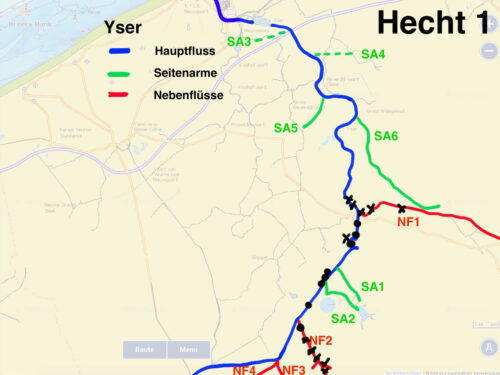
- Individual 1 often stayed in tributary NF1 as well as NF2 – this is the likely spawning area as in spring many pikes were located here.
-
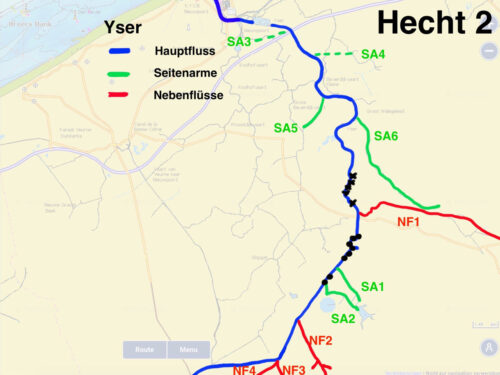
- Natural sidearms SA1 and SA2 were coveted for short trips by individual 2. It often stayed close the sidearms even while being in the mainstem.
-
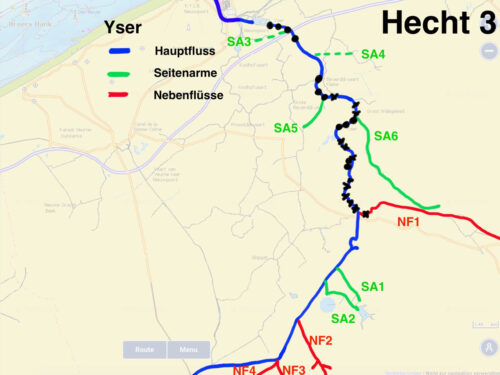
- Individual 3 had a very large action radius and migrated even until the upper basin, before the weir.
-
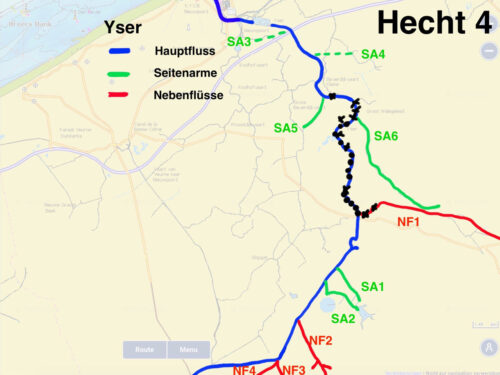
- Individual 4 limited its action radius to a few kilometres and therefore only visited tributary 1 from time to time.
In our opinion, various results were obtained in the study, which although mathematically / statistically proven left us with room for interpretation. If we firstly have a look at the habitat examined in this study (the river Yser), it was very varied with many side arms and channels. Nevertheless pike were mainly found in the main stream.
In winter, they were present there between 25% and 95% of the time. Two of the pike were even located exclusively in the main stream. Of all six sidearms, the pike only visited the two natural sidearms (SA 1 + 2). No pike were located in the artificially created sidearms (SA 3 – 6): Neither in winter nor in spring. This is very interesting, since the artificial sidearms were visually indistinguishable from the natural ones, offering the same types of vegetation.
- In winter, pike were found more often in the sidearms (29% of the observations) than in the tributaries (11% of the observations).
- In spring, this changed and they were found more often in the large tributaries (10% of observations) than in the small sidearms (3% of observations).
River fishing for pike: Result 1
At this point it is already clear that pike have quite different preferences for one or more territories in a river. They furthermore head for these territories with varying frequency – one more often, the other less.
Some precincts were apparently clearly preferred. The pike examined in this study spent most of their time in the main stream, averaging about 3/4 of the total time. Now the main stream of the Yser is not a huge rushing river, but rather calm, with a width of 8 to 25 meters. Thus, it apparently provides quite suitable living conditions for the pike in general.
Note: It should be mentioned that the spawning season probably fell within the time of the study, so that at least some of the springtime locations were visited for reproductive purposes.
River fishing for pike: Result 2
The sidearms seemed to play a major role for the pike in this study. Only about 1/4 of the population didn’t pay them a visit, regardless of whether it was spring or winter. This can probably be explained by prey availability and hunting conditions in the main stream: Many fish leave the main stream of a river during the cold season. This is mainly due to the fact that flow velocities are much higher than in the summer months, because water levels generally rise with the onset of fall.
As vegetation starts to recede with the beginning of autumn, it is absent to slow down the flowing waters in winter. The fish therefore have far fewer flow-calming areas available for them. For this reason, many leave the main stream – at least for extended periods of time.
Furthermore, pike are nor good swimmers neither hunters in fast-flowing waters, so they generally find better conditions in the sidearms. During winter months in addition the vegetation in the riverbed of the sidearms is not as dense as in summer, so that even the large individuals are not hindered. Moreover through the sidearms the pike also have access to the ditches that are part of their hunting grounds in winter.
-

Finding Fish The Smart Way – The Pike
Download 40 pages now for free
This article is an excerpt from:
Reviews ( 64 )
Martin
Hi Garry, i saw that contacting Jens has solved your problem. As written in the Order Mail, download is limited to 3 times. We introduced the limit to prevent fraud. However, if you lose your eBook in the future, please email us and you will of course get new downloads. Martin- Rated 1 out of 5
Garry Gregg
I bought the book online, but try as I might it would not save on my iPad mini 3, from the small amount i was able to read it looked very good. I was given a link that was promised to ALWAYS be available to me, but this was not the case! I wanted to learn how to find Pike in Lough Neagh, the largest lake in the U.K. but I can only fish it blind, useless. Make sure you can save this book BEFORE you buy. - Rated 5 out of 5
Andreas Eden
Unlike other reviewers, I am NOT in favor of shortening or streamlining. The detailed but not generalized aspects provided are scientifically sound and outline the respective topics exceedingly well. Looking forward to more of this, and keep up the great work! Martin
Hi Claus, Thank you for the info about the Tolino. So far, there have been no problems with the popular Android or Apple smartphones and tablets. We’ll take a look at it. Did the upload via the Tolino web reader not work either? Regards Martin- Rated 2 out of 5
Claus Erhard
The content is decent – maybe a little too detailed. Note: I bought the e-book version. The fact that you can’t print it out is alright (this option would be great though). However, I cannot read the PDF file on my Tolino. I uploaded it 1000 times, and nothing is displayed. So reading is only possible on the PC. Too bad! - Rated 5 out of 5
Dieter Gundacker
Highly recommended, lots of fascinating information. It is not easy to put the book down once you have started reading. - Rated 5 out of 5
Kurt Sattler
Great book. I also have “The Pikeperch”. Both are highly recommended. - Rated 5 out of 5
Mirko
A very well written book. - Rated 4 out of 5
Holzblinker
Among the advantages: -statistics and their interpretation -written in a simple and understandable way Among the disadvantages: -advertising -A lot of generally known information - Rated 3 out of 5
Bruno
Exciting content (****) with a tendency to be long-winded (**) - Rated 5 out of 5
Stefan
The book keeps what it promises. An all-around great book that stands out from the rest. The purchase was worth it! - Rated 5 out of 5
Fischfreund
A truly superb book. I also own the book on pikeperch and have to admit that they are two completely different books. There are very few overlaps, so I never had the feeling that I already knew a passage in the book. For this reason, I can unreservedly recommend the pike book. It was so much fun reading it and gradually learning more about the pike. - Rated 5 out of 5
Paul KraUS
An elaborate approach to the behavior of the fish to conclude your fishing behavior, etc. I also like that other professional opinions are taken into account and partly questioned and analyzed. You can learn a lot to save the one or the other unsuccessful day. Thank you! - Rated 5 out of 5
barney1at
I am impressed with the book! I have read many books about fishing, and this was by far the best. It reflects not only the experiences and interpretations of the authors but uses scientific studies as a basis. Some of the findings knocked my socks off, e.g., the distance of attention of the pike. Strong recommendation for anyone who wants to improve their pike fishing skills! - Rated 5 out of 5
Michael Hügel
Sehr gutes Buch hat mir weitergeholfen das Leben des Hechtes zu verstehen. - Rated 5 out of 5
frankadam67
Sehr, sehr schönes Buch mit vielen Informationen! Nun muss ich nur noch alles in die Tat umsetzen! Danke für das gut ausgearbeitete Buch! - Rated 5 out of 5
Thomas Asamer
Bin gerade am Lesen des Buches. Sehr interessant und informativ. Werde meine Hechtfänge sicherlich noch um einiges steigern können mit dem KnowHow des Buches! Weiter so!? - Rated 5 out of 5
Andre Scholz
Hallo Zusammen, ich kann nur sagen, das habt ihr wirklich sehr gut gemacht! Wahnsinnig informativ, Super gegliedert und mit vielen guten Tipps behaftet. Das Zanderbuch war schon ein Knaller!!! Ich freu mich schon auf das Barschbuch. Und nebenbei erwähnt, die Videolektionen Köderkurs 1 sind ebenfalls Mega spannend! Bitte weiter so machen…. Petri Andre - Rated 5 out of 5
Manfred Parbs
Ich finde die Bücher ” Der Hecht ” sowie ” Der Zander ” sind für erfahrene Angler und auch für den Anfänger sehr lehrreich und somit auch informativ gestaltet. Auch die vielen Tips haben mich persönlich schon so manches mal vor einem Schneidertag bewahrt. Ich besitze zudem auch noch das Buch ” Der grosse Echolotratgeber ” . Dieses Buch liefert gute Erklärungen für die Funktionen und Einstellungen von Echoloten. Desweiteren besitze ich auch noch zwei Angelkurse: zum einen Köderfarbe und zum anderen Der Deeper. Beide Kurse sind mit sehr viel Informationen und verständlichen Erklärungen gespickt die jederman sehr gut verstehen kann. Freue mich schon auf weitere Bücher. Ein grosser Dank als auch ein grosses Lob an das Fischfinderteam. Petri Heil & immer dicke Fische Manfred Parbs - Rated 4 out of 5
Fabius Voigt
Klasse Buch! Fundiertes Wissen auf gute Art und Weise zusammengefasst und übermittelt, damit Angler ihren Zielfisch besser verstehen. An einigen Ecken im Buch, wäre ein weitere genauere Ausarbeitung toll gewesen (wurde vom Autor aber selbst bemerkt und begründet). Desweiteren beruhen die meisten Angaben (90%) von Hechten aus Seen und leider nur sehr wenig aus Flüssen. Das sind meiner Meinung nach die einzigen Sachen die fehlen, aber ansonsten würde ich es als Bereicherung für jeden Angler beschreiben! - Rated 5 out of 5
Julia
Genau wie das Zanderbuch wieder der totale Hammer! Wobei für mich die Voraussetzungen etwas anders waren: Während ich meine Zanderfänge wirklich mal dringend etwas ankurbeln musste, fing ich alleine im vorigen Jahr 47 Hechte, es ging hier also eher um Optimierung. Und das ist voll gelungen! Massen von überaus hilfreichen Forschungsergebnissen, Statistiken und Tafeln. Ich bin beim Spinnangeln bisher zu viel gewandert und habe die einzelnen Spots zu kurz beangelt, das weiß ich jetzt. Und so ganz nebenbei ist mir jetzt noch klar, weshalb man in einigen durchaus interessanten Seen in meiner Umgebung von Juni bis Januar partout keinen Fisch fängt. Habe nämlich so einiges über die Schichtung gelernt, und dass eine Abkühlung eben nicht automatisch gleich Verbesserung bedeutet. Klasse! Her mit dem nächsten Buch bitte! - Rated 5 out of 5
Pascal Schlenker
Top nicht das letzte Buch für mich…. - Rated 5 out of 5
Heinz-Otto Schoel
Auf den 50zig Seiten, die ich bis jetzt gelesen habe ,bin ich begeistert. Aber die anderen Bücher über das Echolot und dem Zander waren sehr lehrreich. Weiter so. Freue mich schon auf das Barschbuch. - Rated 5 out of 5
Andreas Hillers
Modernes Fischen – Der Hecht. Ein sehr gut geschriebenes Buch. Bin begeistert von den vielen tollen Hilfestellungen. Sogar als erfahrener Angler kann hier bestimmt jeder noch den ein oder anderen Tipp für sich nutzen. Vielen lieben Dank, und weiter so für vielleicht weitere noch nicht erschienene Bücher über den Aal, Barsch, Karpfen etc. - Rated 5 out of 5
Stephandargel
Das Buch ist einfach nur klasse super beschrieben sehr verständlich beschrieben kann ich nur weiter empfehlen ? gebe dem Buch und dem Autor ne 1+ - Rated 5 out of 5
Rolf Wilde
Sehr praxisnah und auch mit viel Hintergrundinformationen gefülltes Buch. Ich habe über die Feiertage die ersten Seiten verschlungen. Sehr viele Details die ich noch bis zur Schonzeit versuche umzusetzen. - Rated 5 out of 5
Blankmaster
Die Referenz. Umfassend, kein blabla, über den Tellerrand hinausschauend, fundiert, sinnvolle und gut gemachte Graphiken, und das Ganze zu allem Überfluss auch noch unterhaltsam geschrieben. Als bekennender Wenigleser habe ich das Buch innerhalb von 3 Tagen einmal komplett durchgelesen. Uneingeschränkte Kaufempfehlung. - Rated 5 out of 5
Rudolf Knopf
Endlich ein Buch, welches man durchaus als Fachliteratur beschreiben kann. Es werden viele Erfahrungen, welche ich beim meiner Suche nach dem Hecht gemacht habe, bestätigt. Ebenso ist auch sehr viel Neues für mich in dem Buch, was ich bisher in meiner vieljährigen Anglerlaufbahn so nicht gewust habe. Absolute Kaufempfehlung. - Rated 5 out of 5
markus s
Großes Kompliment zum Buch! Ich fische seit meiner Kindheit auf Hecht (und das sind schon mehr als dreißig Jahre) und ich muss sagen, es gibt keine interessantere Lektüre zum Hecht! Viele eigene Theorien finde ich hier bestätigt, aber noch besser: Dieses Buch bietet auch wirklich neue Ansätze! - Rated 5 out of 5
Mitja
Beeindruckende Leistung von Euch, ein so komplexes Thema derart runterzubrechen, daß man das Buch in einem Rutsch durchlesen kann, ohne sich dauernd zu fragen: „verdammt, wovon labern die denn da?“ Superspannend: die Trophieklassifizierung und die Sache mit der Sprungschicht! Ich sehe meine Gewässer jetzt mit ganz anderen Augen und auf einmal kommen mir die 150 Kracher für das Anaconda-GTM gar nicht mehr so übertrieben teuer vor! Und weil es mir so gut gefallen hat, zieh ich mir morgen direkt das Echolot-Buch rein, das mit der Postbote heute morgen in den Kasten geworfen hat….für das Barschbuch hätte ich übrigens gerne einen Gutscheincode 🙂 Danke! Ich freu mich auf weitere spannende Lektüre aus eurem Stall… - Rated 5 out of 5
schoenfeld.oli
Absolut feine Lektüre. Ich gehe nach Lesen des Buches ganz anders ans Wasser. Zwischendrin etwas fader Stoff, der aber einfach dazu gehört. Dafür sind die spannenden Themen so spannend, dass ich nicht im Sitzen lesen konnte. - Rated 5 out of 5
Robert Häusler
Die beiden Autoren Martin Jacobs und Jens Biegemeier sind der Hammer. Ich habe schon viel gut recherchierte Medizinbücher gelesen und oft haben sie mir zu mehr Erfolg verholfen, dass das auch mal Zum Hechtangeln möglich wird ist großartig. Danke an dieses Meisterwerk! Ich habe mit dem Wissen aus dem Buch jetzt schon meinen Angelrekord auf Hecht gebrochen und bin mir sicher da geht noch was. Danke für eure Arbeit, den Fleiß und die Begeisterung die ihr geleistet haben müsst dieses moderne Fische finden für uns und unsrer Seekrokodiele zu ermöglichen. Petri Robert Häusler Martin
Edi, wir danken Dir und wünschen euch gute Fänge. Petri Martin vom Fischfindertestteam- Rated 5 out of 5
Edi Brader
Das beste Buch über die Fischerei auf Hecht, das ich bisher in Händen gehalten habe! Sehr ausführlich und praxisnah wird dem Einsteiger in diese Fischerei veranschaulicht worauf es ankommt und auch der eingefleischte Hechtprofi kann noch sehr viel Nützliches aus diesem Buch herausholen! Absolut EMPFEHLENSWERT! Besonders möchte ich das äußerst nette Team loben! Bei meiner Bestellung ging etwas schief, ich bekam zwei anstatt nur einer Ausgabe. Nach Rücksprache bedankten sie sich für die Information und sagten mir, dass das Zurücksenden ohnehin zu teuer wäre und ich das zweite Exemplar auch behalten dürfte. Danke Jungs, ihr habt gerade einem befreundeten Jungangler eine große Freude gemacht, ich werde euch auf jeden Fall weiterempfehlen! Macht weiter so! Petri Heil Edi Brader - Rated 5 out of 5
lusox
Prima Lektüre , wirklich zu empfehlen ! Besonders gut fand ich das Kapitel mit der Ködergröße. Ebenso das Kapitel mit den Standplätzen und die Rolle der Vegetation Ich habe viele Anregungen daraus mitgenommen und bin mal gespannt wie sich meine Hechtfänge verbessern. Weiter so ! - Rated 5 out of 5
Stefan Fischer
Ich finde, das Buch “Der Hecht” lüftete viele Geheminisse. Hatte das Buch “Der Zander” auch, alles top tock. Hoffentlich folgt das Buch auch über den Barsch, evtl. Waller/Wels. Mir fehlt die Anglerpraxis. Das Buch “Das große Echolot” ist auch klasse. Weiter studieren!!! ^^ Namaste und Petri Fischer Stefan - Rated 5 out of 5
Lasse Wiedenhöft
Wie schon beim Zanderbuch werden für alle denkbaren Situationen (Jahreszeiten, Gewässer, Wetter etc.) hilfreiche Tipps zur Strategieverbesserung gegeben. Dabei helfen die Ergebnisse aus diversen Versuchen und Tests den Hecht und sein Verhalten besser zu verstehen. Gerade die wissenschaftliche Begleitung in Kombination mit eigenen Erfahrungen hat mir schon nach wenigen Kapiteln neue Ideen vermittelt! - Rated 5 out of 5
Johann Burgstaller
Wie bereits “Der Zander”, ist auch die Hechtausgabe wieder jeden Cent wert. Ein must-have für jeden Raubfischangler. Tolle Studien, jede Menge neue Erkenntnisse und enifach zu lesen. Na dann nichts wie auf zum “Der Barsch”! - Rated 5 out of 5
Barschhunter
Das Buch ist Euch wirklich super gelungen!!!!! Es ist sehr informativ und es ist für jeden etwas dabei, ob man nun Anfänger im Angeln ist oder ein erfahrener Angler ist. Man kann immer noch was dazu lernen. Für mich persönlich war das Kapitel “Jagd und Beute” sehr interessant und spannend und möchte deswegen keine einzelnen Punkt hervorheben. Macht weiter so und ich freue mich schon auf Euer nächstes Buch “Modernes Fische Finden Der Barsch” mein persölicher favorite Fisch. Dickes Petrie Barschhunter - Rated 5 out of 5
Andre Scholz
Genauso spannend und aufschlussreich wie das Zander Buch! Wenn man seinen Zielfisch besser verstehen möchte und mehr Erfolg haben will, kommt man nicht um das Buch herum! Allein die Thematik um die Wassertemperaturen, einfach irre! Volle 5 Sterne und Danke für so viel geilen Input! Petri Andre - Rated 5 out of 5
Andreas F.
Sehr schön finde ich die Aufmachung des Buches und die logisch aufbauenden Kapitel. Das Lesen macht viel Spaß. Hier treffen die Autoren genau den richtigen Ton, einen “mitzunehmen”, obwohl die Grundlagen ja wissenschaftlich/biologisch sind. Es ist nicht einfach, plausibel und allgemein verständlich, verschiedene wissenschaftliche Erkenntnisse miteinander zu verknüpfen und hieraus die passenden Schlussfolgerungen zu ziehen. Das ist jedoch durchaus gelungen. Abläufe in der Natur sind nie statisch sondern unterliegen Abweichungen, es gibt aber Tendenzen. Deshalb kann es nicht immer genaue Gesetzmäßigkeiten geben. Hierauf weist das Buch in verschiedenen Kapitel immer wieder hin. Hier hätte ein grundlegender Hinweis in der Einleitung m.e. jedoch ausgereicht. Randnotiz: Ein Absatz erscheint wortgleich an zwei Stellen (S. 11, 1.Abs. und S. 15 3. Abs.). Im Ergebnis ist es ein Buch, was sogar enthusiastischen Raubfischanglern richtig weiterhilft! Meine Erwartungshaltung wurde sogar übertroffen. Ich freue mich auf euer Barschbuch! Vielen Dank! - Rated 5 out of 5
Pascal Kreutzmann
Wie die beiden Bücher zuvor hat mich auch das Buch über den Hecht mal wieder total begeistert. Unglaublich was ihr für einen Aufwand betreiben müsst um all dieses Wissen und die Studien zusammen zu tragen. Besonders interessant fand ich zb. die Frage danach wieviele Hechte sich denn in so einem Gewässer aufhalten. An wievielen Fischen man vorbei angelt. Das war echt interessant. Ebenso die Standplätze der Fische zu den verschiedenen Jahreszeiten und wie sehr vieles von der Wassertemperatur abhängt finde ich sehr Aufschlussreich. Auch über das fressen und gefressen werden kann man einiges erfahren. Jetzt ist mir klar warum der Hecht die Beute am liebsten am Kopf packt und sie möglichst schnell verschlingen muss. Tja die Themenvielfalt ist echt groß. Was mich noch interessiert hätte….wie/was sieht der Hecht durch seine Augen ? Was für Farben nimmt er wahr etc ? Aber das wäre eventuell zu speziell ?! Freue mich auf das nächste Buch! Bloß nicht nachlassen und genauso ausführlich weiter machen. Danke dafür. Ps…ich rezensiere aus Überzeugung , nicht wegen einem Gummifisch ! Grüße und Petri Pascal - Rated 5 out of 5
Ralf B.
Genauso interessant und prall gefüllt mit wertvollen Infos wie das Zanderbuch, einfach TOP! - Rated 5 out of 5
Bickes
Sehr gut strukuriert, sehr informativ, mir hat es definitiv geholfen, meine Taktik zu verbessern und selbstbewusster meine Stellen auszuwählen. - Rated 5 out of 5
opto
Habe alle 3 Bücher! Bin begeistert und dankbar!! Interessieren würde mich warum gerade der Hecht an einem Tag wie verrückt beißt und am nächsten Tag bei absolut gleichen Bedingungen am selben Ort wie ausgestorben erscheint! Interessieren würde mich auch wie der Zander als Augentier mit Sichtigkeiten unter 5cm klarkommt! (Hochwasser) Diese Fragen beschäftigen mich schon ein ganzes Anglerleben. - Rated 5 out of 5
Adrian Drzezla
Das Buch hat sehr viele Informationen über unseren Esox Lucius;). Jedes Kapitel ist sehr spannend und reichhaltig an Informationen. Nach diesem Buch habe ich meine Angelstrategie verbessern können und ich habe nun eine andere Ansicht von unserem Hecht im Wasser bekomme. Petri ! „ sehr empfehlenswert , Genau so wie die letzten Bücher von Fischfindertest“ - Rated 5 out of 5
Evgenij
Suuuper Buch, genau so wie das Zander Buch. Bin total begeistert. Sieht wie eine Doktorarbeit aus. Wissenschaftlich überprüft mit Verweisen, vielen Abbildungen und vielen praktischen Tips. Freue mich auf die neue Bücher! - Rated 5 out of 5
Daniel
Ich kann das Buch jedem Raubfischangler weiterempfehlen. Viele neue und nützliche Informationen rund um unseren Zielfisch Nr. 1. Tolle Arbeit! - Rated 5 out of 5
Jörg
Tolles Buch, hochinformativ von der ersten bis zur letzten Seite. Das Jahr des Hecht hat mir am besten gefallen. Man kann das Buch nur weiterempfehlen! - Rated 5 out of 5
Dirk Lindner
Top buch.umfangreich.logisch.sollte jeder haben.das Zander buch habe ich auch - Rated 5 out of 5
Jörg Thielke
Hoch interessant und verständlich geschrieben. In jedem Fall vollumfänglich weiterzuempfehlen. Danke Männers ? - Rated 5 out of 5
Stefan Klingbeil
Es war nicht anders zu erwarten. Nach dem Zander Buch bin ich wieder voll zufrieden.Die Bücher unterscheiden sich von anderen Büchern und Artikeln aus Zeitschriften. Mehr input brauch ich nicht. Alles erklärt und vernünftig erklärt. Ich lese wirklich nicht gerne Bücher. Aber hier ist es wie ein guter Krimi. Man kann nicht aufhören. Wir haben es alle gelesen und Diskutieren unser Wissen zusammen um es nochmal zu vertiefen. Jetzt freuen wir uns auf Der Barsch ? - Rated 5 out of 5
Jörg Rolle
Ein sehr gutes Buch so wie ich es erwartet habe nach dem ich Euer Zander-Buch gelesen habe. bin begeistert viele Tipps in Jagd und Beute,Umweltfaktoren,Lebensräume Kapitel 5.2.2 und Das Jahr des Hechtes.Habe noch nicht viel Erfahrung Hecht angeln ,das Buch hat mir viel Wissen übermittelt auch wenn ich noch nicht alles gelesen habe. Danke weiter so Petri - Rated 5 out of 5
Philipp
Kurz und knapp, Top! Wie auch bereits im Buch “Modernes Fische finden Der Zander” erneut abgeliefert. Besten Dank, macht weiter so! - Rated 5 out of 5
Ben
Glaube ich hab gerade vergessen die Sterne zu drücken! Auf jeden Fall 5 Sterne da es super verständlich geschrieben ist! Es beschreibt das Verhalten der Fische in verschiedenen Situationen und wenn man das versteht und nutzt fängt man sicher bald besser! Auch die Grafiken und Bilder vereinfachen es sehr gut. Bin sehr zufrieden und hoffe das noch eins für Barsche und Wels kommt! ?? - Rated 5 out of 5
Nico Drabner
Volle Punktzahl ?? Ein dickes Lob. Sehr schön aufgebaut. Am besten hat mir die Gewässeranalyse und die Aussage mit der Wassertemperatur gefallen, das passt zu 100% und Danke an den vielen nützlichen Tipps - Rated 5 out of 5
Kuhnert Giso
Also ich habe schon das Buch vom Zander gelesen. Und auch dieses Buch vom Hecht ist sehr Lehrreich mit vielen interessanten Kapiteln.. Ich bin noch nicht ganz durch mit dem lesen, aber ich weiß das es toll ist und mir auf alle Fälle weiter helfen wird um den ein oder anderen Hecht mehr an den Haken zu bekommen. Ich empfehle es auf alle Fälle weiter.. Und auch das nächste Buch über den Barsch werde ich mir holen. Macht weiter so fünf Sterne gibt’s vom mir. LG Giso - Rated 5 out of 5
David Götze
Hallo zusammen, ich habe mittlerweile alle 3 Bücher und kann ehrlich behaupten, dass es mir beim Angeln bzw. Fische finden sehr viel gebracht hat. Vorallem das Angeln unter Einfluss der Mitwelt (Wind, Temperatur…etc) lässt mich jetzt meine Spotwahl genauer überdenken. Vielen Dank dafür und ich freu mich schon auf den Barsch ^^ Petri David - Rated 4 out of 5
Peter
absolute Empfehlung - Rated 5 out of 5
Ben
Finde das Buch sehr gut! Genau wie das Zander Buch beschreibt es worauf es ankommt… das Verhalten der Fische in verschiedenen Situationen. Es ist verständlich erklärt und die Bilder und Grafiken machen es noch einfacher zu verstehen worauf es ankommt! Weiter so! Barsch und Wels können kommen? - Rated 5 out of 5
Kantor Alfred (Hatschi)
Ich habe viele Jahre viel Zeit verschwendet weil ich den Fisch nicht immer gefunden habe, dass Buch hilft wirklich die Fische zu finden. Ich habe es nicht nur gelesen sondern auch schon teilweise am Wochenende umgesetzt und das mit Erfolg (einige schöne Hechte), vielen dank ich freue mich auf euer nächstes Werk Der Barsch. Weiter so!!! Petri Heil Hatschi - Rated 5 out of 5
Patrick
Also ich muss jetzt mal eine Lanze brechen, es gibt doch noch qualitativ hochwertige Bücher zum Thema Fisch und dann noch direkt zum Thema Hecht, in einer Qualität die ihres gleichen sucht. Selten das ich derart im „Rausch“ ein Buch gelesen habe. Hut ab und weiter so. - Rated 5 out of 5
Tacklefever
Ich war sehr positiv überrascht. Der Anfänger erhält im ersten Teil des Buches wirklich brauchbares Basiswissen vermittelt. Und der ein oder andere Profi wird vielleicht sagen: “Mache ich doch immer so”. Und das ist doch das beste Lob für den ersten Teil des Buches. Aber wenn der Profi ehrlich ist, kann er wahrscheinlich schon zugeben, das ein oder andere gefunden zu haben was er vergessen hatte oder doch noch nicht wusste. Und richtig spannend für Anfänger und Profi ist der Hautteil des Buches, das Kapitel “Jahr des Hechtes”. Dieser Teil hat absolut zu Recht den meisten Platz im Buch bekommen. Bei den einfach gegliederten und nachvollziehbaren Abschnitten im Jahr des Hechtes findet sicher nicht nur der Anfänger sondern auch der Profi jede Menge tolle Infos. Meine volle Buchbesprechung findet ihr unter https://www.tacklefever.de/index.php?topic=7396.0 - Rated 5 out of 5
Andreas
Wie erwartet, ein sehr gutes Buch das nicht in dem Köderwahnsinn hinterherläuft. Besonders gut gefällt mir die Analyse der Wassertemperaturbereiche passend für meine großen See in Mecklenburg. Die Gewässeranalysen passen wie die Faust auf Auge auf dieses sehr große Gewässer. Die neuen Möglichkeiten und überragenden Fänge von einigen lokalen Guides erzielt werden, welche in Großen Teilen durch die gewaltigen Technologiesprünge im Echolotbereich und Bootsnavigation begründet sind, wurde hier sehr gut zusammengefasst. Eine Pflichtlektüre für jeden der sich an die großen Gewässer mit den noch größeren Fische wagen will. Definitiv 5 Sterne, das Buch wurde auch innerhalb von 2 Nachmittagen gelesen. Danke! - Rated 5 out of 5
Wolfgang Konter
Habe das Buch heute bekommen .Dafür erstmal ein großes Danke schön an Euch . Nach dem ersten Durchblättern war ich begeistert . Habe eigentlich auch nichts anderes erwartet . “Modernes Fische finden – Der Zander” habe ich ja schon lange durch und blättere immer wieder drin rum . Beide Bücher zeugen von viel Sachverstand und Erkenntnissen , die ich so nicht erwartet hätte . Einfach super und verständlich erklärt . Jetzt will ich nur hoffen , dass noch ein Barsch Buch auf dieses Duo folgt . Petri Heil Wolfgang Konter - Rated 5 out of 5
Catchmaster
Habe das Buch heute direkt durchgelesen. Es ist gut aufgebaut und es gibt viele nützliche Tip’s. Anfang Mai waren wir in Schweden auf Hecht angeln. Schade, dass ich dieses Buch nicht schon vorher hatte. Aufgrund der neuen Erkenntnis hätte ich bestimmt mehr Erfolg gehabt. An sich ein super Buch. Werde jetz die Tip’s in die Praxis umsetzen. Vielen Dank für dieses Buch. - Rated 5 out of 5
Jörg Rolle
Habe das Buch Heute erhalten und sofort durchgestöbert,bin Begeistert! Sehr schöne Aufmachung, gut Gegliedert und nicht zu wissenschaftlich so das es jeder Angler verstehen kann.Habe auch schon Kapitel gefunden die mir reichlich neues und gute Tipps für meine Angelpraxis gefunden. Weiter so!!!!!!! Petri Jörg Rolle
Which bank type did most pike prefer?
While the activity radius of a pike can be wide, its territory often only covers a few meters. However they can move their territory within their action radius. In theory, they are free to choose where they have theirs – but in practice it is not quite that simple.
- Flow velocity,
- vegetation,
- availability of prey,
- hiding places for optimal hunting
- or the physical proximity of other territories
are also among the criteria for territory selection. External factors such as a sudden shortage of prey fish may require an equally rapid relocation.
Other pike also have a significant influence on the territory selection: If a certain area is already occupied by a pike, a newly arriving one would have to fight for it first. For this reason, pike are usually more or less evenly distributed along shorelines.
To better understand the results of the study, we need to look at the frequency of a bank type in relation to the number of pike located in it. If 40 % of the shoreline was type 4 (near-natural with no vegetation) and 40 % of the individuals were found on that type, that does not immediately convert it in a hotspot. Only if more than the average would have choosen this bank type, we could call it one.
River fishing for pike: Result 3
If we look at the whole channel system, most catches of pike took place on the banks of type 1, 4 and 5. These results however are still not “wow-worthy” as they were pretty much predictable: If a bank type is that common, then logically that’s where most of the pike are expected to be found.
So that this information is nice to know, but it still doesn’t get us anywhere, since the three bank types together account for eighty percent of the total riparian landscape. In this case lots of pike still don’t necessarily caracterize a hotspot, if they are found on a long stretch.
What is a hotspot for pike fishing then?
A hotspot is a fishing area where there are found more pike than we could expect on average. Some numbers and a little bit of theory should make this clearer for you.
We reduce our study area to a stretch of 1000 meters. We leave the shoreline areas equally distributed so that forty percent – or 400 m – is near-natural shoreline with no significant vegatation (Type 4). 200 m are near-natural banks with reeds (type 5) and 50 m are near-natural banks with woody vegetation (type 6).
If there are now 20 pike on these 1000 m, one could assume the following, if the distribution would be uniform:
- 8 would be found on banks of type 4,
- 4 on the ones of type 5
- and 1 on type 6.
Assuming an uniform distribution, there would be a pike located every 50 m. The individual bank areas therefore only count as hotspot, when there is more than one pike to be found on this exemplary stretch of 50 m.
Now one of the eight pike moves its territory from the banks of type 4 to the near-natural ones with woody vegetation (type 6). Although this means that seven pike still remain there, so that most specimens are located in this area, we only find one every 57 m (400 m / 7). Less than on the other bank areas.
This proves two things:
- Many pike do not necessarily mean a hotspot.
- But with this the riverbank area of type 6 became a hotspot, because there are two individuals every 50 m. So every 25 m a pike is waiting four our delicious baits.
Note: A hotspot for pike fishing harbours more pike than we would actually expect from it.
River fishing for pike: Result 4
According to the study, the near-natural bank with reeds (type 5) clearly dominated – especially in winter. This type was more frequently occupied by pike than the other bank areas. In spring and particularly in winter, in this riparian area there were more pike found than could be expected.
This is further supported by the results of other studies. Pike in a river are generally attracted to sites with reeds, especially during the cold season. Thus, most individuals are likely to be close to type 5 edges (20% of total bank area) during winter. As they follow their prey seeking slow moving water to avoid wasting energy by having to swim (and exert themselves) unnecessarily. And slow moving water is to be found in the shallow areas close to the bank and in the side arms.
-

Finding Fish The Smart Way – The Pike
Download 40 pages now for free
This article is an excerpt from:
Reviews ( 64 )
Martin
Hi Garry, i saw that contacting Jens has solved your problem. As written in the Order Mail, download is limited to 3 times. We introduced the limit to prevent fraud. However, if you lose your eBook in the future, please email us and you will of course get new downloads. Martin- Rated 1 out of 5
Garry Gregg
I bought the book online, but try as I might it would not save on my iPad mini 3, from the small amount i was able to read it looked very good. I was given a link that was promised to ALWAYS be available to me, but this was not the case! I wanted to learn how to find Pike in Lough Neagh, the largest lake in the U.K. but I can only fish it blind, useless. Make sure you can save this book BEFORE you buy. - Rated 5 out of 5
Andreas Eden
Unlike other reviewers, I am NOT in favor of shortening or streamlining. The detailed but not generalized aspects provided are scientifically sound and outline the respective topics exceedingly well. Looking forward to more of this, and keep up the great work! Martin
Hi Claus, Thank you for the info about the Tolino. So far, there have been no problems with the popular Android or Apple smartphones and tablets. We’ll take a look at it. Did the upload via the Tolino web reader not work either? Regards Martin- Rated 2 out of 5
Claus Erhard
The content is decent – maybe a little too detailed. Note: I bought the e-book version. The fact that you can’t print it out is alright (this option would be great though). However, I cannot read the PDF file on my Tolino. I uploaded it 1000 times, and nothing is displayed. So reading is only possible on the PC. Too bad! - Rated 5 out of 5
Dieter Gundacker
Highly recommended, lots of fascinating information. It is not easy to put the book down once you have started reading. - Rated 5 out of 5
Kurt Sattler
Great book. I also have “The Pikeperch”. Both are highly recommended. - Rated 5 out of 5
Mirko
A very well written book. - Rated 4 out of 5
Holzblinker
Among the advantages: -statistics and their interpretation -written in a simple and understandable way Among the disadvantages: -advertising -A lot of generally known information - Rated 3 out of 5
Bruno
Exciting content (****) with a tendency to be long-winded (**) - Rated 5 out of 5
Stefan
The book keeps what it promises. An all-around great book that stands out from the rest. The purchase was worth it! - Rated 5 out of 5
Fischfreund
A truly superb book. I also own the book on pikeperch and have to admit that they are two completely different books. There are very few overlaps, so I never had the feeling that I already knew a passage in the book. For this reason, I can unreservedly recommend the pike book. It was so much fun reading it and gradually learning more about the pike. - Rated 5 out of 5
Paul KraUS
An elaborate approach to the behavior of the fish to conclude your fishing behavior, etc. I also like that other professional opinions are taken into account and partly questioned and analyzed. You can learn a lot to save the one or the other unsuccessful day. Thank you! - Rated 5 out of 5
barney1at
I am impressed with the book! I have read many books about fishing, and this was by far the best. It reflects not only the experiences and interpretations of the authors but uses scientific studies as a basis. Some of the findings knocked my socks off, e.g., the distance of attention of the pike. Strong recommendation for anyone who wants to improve their pike fishing skills! - Rated 5 out of 5
Michael Hügel
Sehr gutes Buch hat mir weitergeholfen das Leben des Hechtes zu verstehen. - Rated 5 out of 5
frankadam67
Sehr, sehr schönes Buch mit vielen Informationen! Nun muss ich nur noch alles in die Tat umsetzen! Danke für das gut ausgearbeitete Buch! - Rated 5 out of 5
Thomas Asamer
Bin gerade am Lesen des Buches. Sehr interessant und informativ. Werde meine Hechtfänge sicherlich noch um einiges steigern können mit dem KnowHow des Buches! Weiter so!? - Rated 5 out of 5
Andre Scholz
Hallo Zusammen, ich kann nur sagen, das habt ihr wirklich sehr gut gemacht! Wahnsinnig informativ, Super gegliedert und mit vielen guten Tipps behaftet. Das Zanderbuch war schon ein Knaller!!! Ich freu mich schon auf das Barschbuch. Und nebenbei erwähnt, die Videolektionen Köderkurs 1 sind ebenfalls Mega spannend! Bitte weiter so machen…. Petri Andre - Rated 5 out of 5
Manfred Parbs
Ich finde die Bücher ” Der Hecht ” sowie ” Der Zander ” sind für erfahrene Angler und auch für den Anfänger sehr lehrreich und somit auch informativ gestaltet. Auch die vielen Tips haben mich persönlich schon so manches mal vor einem Schneidertag bewahrt. Ich besitze zudem auch noch das Buch ” Der grosse Echolotratgeber ” . Dieses Buch liefert gute Erklärungen für die Funktionen und Einstellungen von Echoloten. Desweiteren besitze ich auch noch zwei Angelkurse: zum einen Köderfarbe und zum anderen Der Deeper. Beide Kurse sind mit sehr viel Informationen und verständlichen Erklärungen gespickt die jederman sehr gut verstehen kann. Freue mich schon auf weitere Bücher. Ein grosser Dank als auch ein grosses Lob an das Fischfinderteam. Petri Heil & immer dicke Fische Manfred Parbs - Rated 4 out of 5
Fabius Voigt
Klasse Buch! Fundiertes Wissen auf gute Art und Weise zusammengefasst und übermittelt, damit Angler ihren Zielfisch besser verstehen. An einigen Ecken im Buch, wäre ein weitere genauere Ausarbeitung toll gewesen (wurde vom Autor aber selbst bemerkt und begründet). Desweiteren beruhen die meisten Angaben (90%) von Hechten aus Seen und leider nur sehr wenig aus Flüssen. Das sind meiner Meinung nach die einzigen Sachen die fehlen, aber ansonsten würde ich es als Bereicherung für jeden Angler beschreiben! - Rated 5 out of 5
Julia
Genau wie das Zanderbuch wieder der totale Hammer! Wobei für mich die Voraussetzungen etwas anders waren: Während ich meine Zanderfänge wirklich mal dringend etwas ankurbeln musste, fing ich alleine im vorigen Jahr 47 Hechte, es ging hier also eher um Optimierung. Und das ist voll gelungen! Massen von überaus hilfreichen Forschungsergebnissen, Statistiken und Tafeln. Ich bin beim Spinnangeln bisher zu viel gewandert und habe die einzelnen Spots zu kurz beangelt, das weiß ich jetzt. Und so ganz nebenbei ist mir jetzt noch klar, weshalb man in einigen durchaus interessanten Seen in meiner Umgebung von Juni bis Januar partout keinen Fisch fängt. Habe nämlich so einiges über die Schichtung gelernt, und dass eine Abkühlung eben nicht automatisch gleich Verbesserung bedeutet. Klasse! Her mit dem nächsten Buch bitte! - Rated 5 out of 5
Pascal Schlenker
Top nicht das letzte Buch für mich…. - Rated 5 out of 5
Heinz-Otto Schoel
Auf den 50zig Seiten, die ich bis jetzt gelesen habe ,bin ich begeistert. Aber die anderen Bücher über das Echolot und dem Zander waren sehr lehrreich. Weiter so. Freue mich schon auf das Barschbuch. - Rated 5 out of 5
Andreas Hillers
Modernes Fischen – Der Hecht. Ein sehr gut geschriebenes Buch. Bin begeistert von den vielen tollen Hilfestellungen. Sogar als erfahrener Angler kann hier bestimmt jeder noch den ein oder anderen Tipp für sich nutzen. Vielen lieben Dank, und weiter so für vielleicht weitere noch nicht erschienene Bücher über den Aal, Barsch, Karpfen etc. - Rated 5 out of 5
Stephandargel
Das Buch ist einfach nur klasse super beschrieben sehr verständlich beschrieben kann ich nur weiter empfehlen ? gebe dem Buch und dem Autor ne 1+ - Rated 5 out of 5
Rolf Wilde
Sehr praxisnah und auch mit viel Hintergrundinformationen gefülltes Buch. Ich habe über die Feiertage die ersten Seiten verschlungen. Sehr viele Details die ich noch bis zur Schonzeit versuche umzusetzen. - Rated 5 out of 5
Blankmaster
Die Referenz. Umfassend, kein blabla, über den Tellerrand hinausschauend, fundiert, sinnvolle und gut gemachte Graphiken, und das Ganze zu allem Überfluss auch noch unterhaltsam geschrieben. Als bekennender Wenigleser habe ich das Buch innerhalb von 3 Tagen einmal komplett durchgelesen. Uneingeschränkte Kaufempfehlung. - Rated 5 out of 5
Rudolf Knopf
Endlich ein Buch, welches man durchaus als Fachliteratur beschreiben kann. Es werden viele Erfahrungen, welche ich beim meiner Suche nach dem Hecht gemacht habe, bestätigt. Ebenso ist auch sehr viel Neues für mich in dem Buch, was ich bisher in meiner vieljährigen Anglerlaufbahn so nicht gewust habe. Absolute Kaufempfehlung. - Rated 5 out of 5
markus s
Großes Kompliment zum Buch! Ich fische seit meiner Kindheit auf Hecht (und das sind schon mehr als dreißig Jahre) und ich muss sagen, es gibt keine interessantere Lektüre zum Hecht! Viele eigene Theorien finde ich hier bestätigt, aber noch besser: Dieses Buch bietet auch wirklich neue Ansätze! - Rated 5 out of 5
Mitja
Beeindruckende Leistung von Euch, ein so komplexes Thema derart runterzubrechen, daß man das Buch in einem Rutsch durchlesen kann, ohne sich dauernd zu fragen: „verdammt, wovon labern die denn da?“ Superspannend: die Trophieklassifizierung und die Sache mit der Sprungschicht! Ich sehe meine Gewässer jetzt mit ganz anderen Augen und auf einmal kommen mir die 150 Kracher für das Anaconda-GTM gar nicht mehr so übertrieben teuer vor! Und weil es mir so gut gefallen hat, zieh ich mir morgen direkt das Echolot-Buch rein, das mit der Postbote heute morgen in den Kasten geworfen hat….für das Barschbuch hätte ich übrigens gerne einen Gutscheincode 🙂 Danke! Ich freu mich auf weitere spannende Lektüre aus eurem Stall… - Rated 5 out of 5
schoenfeld.oli
Absolut feine Lektüre. Ich gehe nach Lesen des Buches ganz anders ans Wasser. Zwischendrin etwas fader Stoff, der aber einfach dazu gehört. Dafür sind die spannenden Themen so spannend, dass ich nicht im Sitzen lesen konnte. - Rated 5 out of 5
Robert Häusler
Die beiden Autoren Martin Jacobs und Jens Biegemeier sind der Hammer. Ich habe schon viel gut recherchierte Medizinbücher gelesen und oft haben sie mir zu mehr Erfolg verholfen, dass das auch mal Zum Hechtangeln möglich wird ist großartig. Danke an dieses Meisterwerk! Ich habe mit dem Wissen aus dem Buch jetzt schon meinen Angelrekord auf Hecht gebrochen und bin mir sicher da geht noch was. Danke für eure Arbeit, den Fleiß und die Begeisterung die ihr geleistet haben müsst dieses moderne Fische finden für uns und unsrer Seekrokodiele zu ermöglichen. Petri Robert Häusler Martin
Edi, wir danken Dir und wünschen euch gute Fänge. Petri Martin vom Fischfindertestteam- Rated 5 out of 5
Edi Brader
Das beste Buch über die Fischerei auf Hecht, das ich bisher in Händen gehalten habe! Sehr ausführlich und praxisnah wird dem Einsteiger in diese Fischerei veranschaulicht worauf es ankommt und auch der eingefleischte Hechtprofi kann noch sehr viel Nützliches aus diesem Buch herausholen! Absolut EMPFEHLENSWERT! Besonders möchte ich das äußerst nette Team loben! Bei meiner Bestellung ging etwas schief, ich bekam zwei anstatt nur einer Ausgabe. Nach Rücksprache bedankten sie sich für die Information und sagten mir, dass das Zurücksenden ohnehin zu teuer wäre und ich das zweite Exemplar auch behalten dürfte. Danke Jungs, ihr habt gerade einem befreundeten Jungangler eine große Freude gemacht, ich werde euch auf jeden Fall weiterempfehlen! Macht weiter so! Petri Heil Edi Brader - Rated 5 out of 5
lusox
Prima Lektüre , wirklich zu empfehlen ! Besonders gut fand ich das Kapitel mit der Ködergröße. Ebenso das Kapitel mit den Standplätzen und die Rolle der Vegetation Ich habe viele Anregungen daraus mitgenommen und bin mal gespannt wie sich meine Hechtfänge verbessern. Weiter so ! - Rated 5 out of 5
Stefan Fischer
Ich finde, das Buch “Der Hecht” lüftete viele Geheminisse. Hatte das Buch “Der Zander” auch, alles top tock. Hoffentlich folgt das Buch auch über den Barsch, evtl. Waller/Wels. Mir fehlt die Anglerpraxis. Das Buch “Das große Echolot” ist auch klasse. Weiter studieren!!! ^^ Namaste und Petri Fischer Stefan - Rated 5 out of 5
Lasse Wiedenhöft
Wie schon beim Zanderbuch werden für alle denkbaren Situationen (Jahreszeiten, Gewässer, Wetter etc.) hilfreiche Tipps zur Strategieverbesserung gegeben. Dabei helfen die Ergebnisse aus diversen Versuchen und Tests den Hecht und sein Verhalten besser zu verstehen. Gerade die wissenschaftliche Begleitung in Kombination mit eigenen Erfahrungen hat mir schon nach wenigen Kapiteln neue Ideen vermittelt! - Rated 5 out of 5
Johann Burgstaller
Wie bereits “Der Zander”, ist auch die Hechtausgabe wieder jeden Cent wert. Ein must-have für jeden Raubfischangler. Tolle Studien, jede Menge neue Erkenntnisse und enifach zu lesen. Na dann nichts wie auf zum “Der Barsch”! - Rated 5 out of 5
Barschhunter
Das Buch ist Euch wirklich super gelungen!!!!! Es ist sehr informativ und es ist für jeden etwas dabei, ob man nun Anfänger im Angeln ist oder ein erfahrener Angler ist. Man kann immer noch was dazu lernen. Für mich persönlich war das Kapitel “Jagd und Beute” sehr interessant und spannend und möchte deswegen keine einzelnen Punkt hervorheben. Macht weiter so und ich freue mich schon auf Euer nächstes Buch “Modernes Fische Finden Der Barsch” mein persölicher favorite Fisch. Dickes Petrie Barschhunter - Rated 5 out of 5
Andre Scholz
Genauso spannend und aufschlussreich wie das Zander Buch! Wenn man seinen Zielfisch besser verstehen möchte und mehr Erfolg haben will, kommt man nicht um das Buch herum! Allein die Thematik um die Wassertemperaturen, einfach irre! Volle 5 Sterne und Danke für so viel geilen Input! Petri Andre - Rated 5 out of 5
Andreas F.
Sehr schön finde ich die Aufmachung des Buches und die logisch aufbauenden Kapitel. Das Lesen macht viel Spaß. Hier treffen die Autoren genau den richtigen Ton, einen “mitzunehmen”, obwohl die Grundlagen ja wissenschaftlich/biologisch sind. Es ist nicht einfach, plausibel und allgemein verständlich, verschiedene wissenschaftliche Erkenntnisse miteinander zu verknüpfen und hieraus die passenden Schlussfolgerungen zu ziehen. Das ist jedoch durchaus gelungen. Abläufe in der Natur sind nie statisch sondern unterliegen Abweichungen, es gibt aber Tendenzen. Deshalb kann es nicht immer genaue Gesetzmäßigkeiten geben. Hierauf weist das Buch in verschiedenen Kapitel immer wieder hin. Hier hätte ein grundlegender Hinweis in der Einleitung m.e. jedoch ausgereicht. Randnotiz: Ein Absatz erscheint wortgleich an zwei Stellen (S. 11, 1.Abs. und S. 15 3. Abs.). Im Ergebnis ist es ein Buch, was sogar enthusiastischen Raubfischanglern richtig weiterhilft! Meine Erwartungshaltung wurde sogar übertroffen. Ich freue mich auf euer Barschbuch! Vielen Dank! - Rated 5 out of 5
Pascal Kreutzmann
Wie die beiden Bücher zuvor hat mich auch das Buch über den Hecht mal wieder total begeistert. Unglaublich was ihr für einen Aufwand betreiben müsst um all dieses Wissen und die Studien zusammen zu tragen. Besonders interessant fand ich zb. die Frage danach wieviele Hechte sich denn in so einem Gewässer aufhalten. An wievielen Fischen man vorbei angelt. Das war echt interessant. Ebenso die Standplätze der Fische zu den verschiedenen Jahreszeiten und wie sehr vieles von der Wassertemperatur abhängt finde ich sehr Aufschlussreich. Auch über das fressen und gefressen werden kann man einiges erfahren. Jetzt ist mir klar warum der Hecht die Beute am liebsten am Kopf packt und sie möglichst schnell verschlingen muss. Tja die Themenvielfalt ist echt groß. Was mich noch interessiert hätte….wie/was sieht der Hecht durch seine Augen ? Was für Farben nimmt er wahr etc ? Aber das wäre eventuell zu speziell ?! Freue mich auf das nächste Buch! Bloß nicht nachlassen und genauso ausführlich weiter machen. Danke dafür. Ps…ich rezensiere aus Überzeugung , nicht wegen einem Gummifisch ! Grüße und Petri Pascal - Rated 5 out of 5
Ralf B.
Genauso interessant und prall gefüllt mit wertvollen Infos wie das Zanderbuch, einfach TOP! - Rated 5 out of 5
Bickes
Sehr gut strukuriert, sehr informativ, mir hat es definitiv geholfen, meine Taktik zu verbessern und selbstbewusster meine Stellen auszuwählen. - Rated 5 out of 5
opto
Habe alle 3 Bücher! Bin begeistert und dankbar!! Interessieren würde mich warum gerade der Hecht an einem Tag wie verrückt beißt und am nächsten Tag bei absolut gleichen Bedingungen am selben Ort wie ausgestorben erscheint! Interessieren würde mich auch wie der Zander als Augentier mit Sichtigkeiten unter 5cm klarkommt! (Hochwasser) Diese Fragen beschäftigen mich schon ein ganzes Anglerleben. - Rated 5 out of 5
Adrian Drzezla
Das Buch hat sehr viele Informationen über unseren Esox Lucius;). Jedes Kapitel ist sehr spannend und reichhaltig an Informationen. Nach diesem Buch habe ich meine Angelstrategie verbessern können und ich habe nun eine andere Ansicht von unserem Hecht im Wasser bekomme. Petri ! „ sehr empfehlenswert , Genau so wie die letzten Bücher von Fischfindertest“ - Rated 5 out of 5
Evgenij
Suuuper Buch, genau so wie das Zander Buch. Bin total begeistert. Sieht wie eine Doktorarbeit aus. Wissenschaftlich überprüft mit Verweisen, vielen Abbildungen und vielen praktischen Tips. Freue mich auf die neue Bücher! - Rated 5 out of 5
Daniel
Ich kann das Buch jedem Raubfischangler weiterempfehlen. Viele neue und nützliche Informationen rund um unseren Zielfisch Nr. 1. Tolle Arbeit! - Rated 5 out of 5
Jörg
Tolles Buch, hochinformativ von der ersten bis zur letzten Seite. Das Jahr des Hecht hat mir am besten gefallen. Man kann das Buch nur weiterempfehlen! - Rated 5 out of 5
Dirk Lindner
Top buch.umfangreich.logisch.sollte jeder haben.das Zander buch habe ich auch - Rated 5 out of 5
Jörg Thielke
Hoch interessant und verständlich geschrieben. In jedem Fall vollumfänglich weiterzuempfehlen. Danke Männers ? - Rated 5 out of 5
Stefan Klingbeil
Es war nicht anders zu erwarten. Nach dem Zander Buch bin ich wieder voll zufrieden.Die Bücher unterscheiden sich von anderen Büchern und Artikeln aus Zeitschriften. Mehr input brauch ich nicht. Alles erklärt und vernünftig erklärt. Ich lese wirklich nicht gerne Bücher. Aber hier ist es wie ein guter Krimi. Man kann nicht aufhören. Wir haben es alle gelesen und Diskutieren unser Wissen zusammen um es nochmal zu vertiefen. Jetzt freuen wir uns auf Der Barsch ? - Rated 5 out of 5
Jörg Rolle
Ein sehr gutes Buch so wie ich es erwartet habe nach dem ich Euer Zander-Buch gelesen habe. bin begeistert viele Tipps in Jagd und Beute,Umweltfaktoren,Lebensräume Kapitel 5.2.2 und Das Jahr des Hechtes.Habe noch nicht viel Erfahrung Hecht angeln ,das Buch hat mir viel Wissen übermittelt auch wenn ich noch nicht alles gelesen habe. Danke weiter so Petri - Rated 5 out of 5
Philipp
Kurz und knapp, Top! Wie auch bereits im Buch “Modernes Fische finden Der Zander” erneut abgeliefert. Besten Dank, macht weiter so! - Rated 5 out of 5
Ben
Glaube ich hab gerade vergessen die Sterne zu drücken! Auf jeden Fall 5 Sterne da es super verständlich geschrieben ist! Es beschreibt das Verhalten der Fische in verschiedenen Situationen und wenn man das versteht und nutzt fängt man sicher bald besser! Auch die Grafiken und Bilder vereinfachen es sehr gut. Bin sehr zufrieden und hoffe das noch eins für Barsche und Wels kommt! ?? - Rated 5 out of 5
Nico Drabner
Volle Punktzahl ?? Ein dickes Lob. Sehr schön aufgebaut. Am besten hat mir die Gewässeranalyse und die Aussage mit der Wassertemperatur gefallen, das passt zu 100% und Danke an den vielen nützlichen Tipps - Rated 5 out of 5
Kuhnert Giso
Also ich habe schon das Buch vom Zander gelesen. Und auch dieses Buch vom Hecht ist sehr Lehrreich mit vielen interessanten Kapiteln.. Ich bin noch nicht ganz durch mit dem lesen, aber ich weiß das es toll ist und mir auf alle Fälle weiter helfen wird um den ein oder anderen Hecht mehr an den Haken zu bekommen. Ich empfehle es auf alle Fälle weiter.. Und auch das nächste Buch über den Barsch werde ich mir holen. Macht weiter so fünf Sterne gibt’s vom mir. LG Giso - Rated 5 out of 5
David Götze
Hallo zusammen, ich habe mittlerweile alle 3 Bücher und kann ehrlich behaupten, dass es mir beim Angeln bzw. Fische finden sehr viel gebracht hat. Vorallem das Angeln unter Einfluss der Mitwelt (Wind, Temperatur…etc) lässt mich jetzt meine Spotwahl genauer überdenken. Vielen Dank dafür und ich freu mich schon auf den Barsch ^^ Petri David - Rated 4 out of 5
Peter
absolute Empfehlung - Rated 5 out of 5
Ben
Finde das Buch sehr gut! Genau wie das Zander Buch beschreibt es worauf es ankommt… das Verhalten der Fische in verschiedenen Situationen. Es ist verständlich erklärt und die Bilder und Grafiken machen es noch einfacher zu verstehen worauf es ankommt! Weiter so! Barsch und Wels können kommen? - Rated 5 out of 5
Kantor Alfred (Hatschi)
Ich habe viele Jahre viel Zeit verschwendet weil ich den Fisch nicht immer gefunden habe, dass Buch hilft wirklich die Fische zu finden. Ich habe es nicht nur gelesen sondern auch schon teilweise am Wochenende umgesetzt und das mit Erfolg (einige schöne Hechte), vielen dank ich freue mich auf euer nächstes Werk Der Barsch. Weiter so!!! Petri Heil Hatschi - Rated 5 out of 5
Patrick
Also ich muss jetzt mal eine Lanze brechen, es gibt doch noch qualitativ hochwertige Bücher zum Thema Fisch und dann noch direkt zum Thema Hecht, in einer Qualität die ihres gleichen sucht. Selten das ich derart im „Rausch“ ein Buch gelesen habe. Hut ab und weiter so. - Rated 5 out of 5
Tacklefever
Ich war sehr positiv überrascht. Der Anfänger erhält im ersten Teil des Buches wirklich brauchbares Basiswissen vermittelt. Und der ein oder andere Profi wird vielleicht sagen: “Mache ich doch immer so”. Und das ist doch das beste Lob für den ersten Teil des Buches. Aber wenn der Profi ehrlich ist, kann er wahrscheinlich schon zugeben, das ein oder andere gefunden zu haben was er vergessen hatte oder doch noch nicht wusste. Und richtig spannend für Anfänger und Profi ist der Hautteil des Buches, das Kapitel “Jahr des Hechtes”. Dieser Teil hat absolut zu Recht den meisten Platz im Buch bekommen. Bei den einfach gegliederten und nachvollziehbaren Abschnitten im Jahr des Hechtes findet sicher nicht nur der Anfänger sondern auch der Profi jede Menge tolle Infos. Meine volle Buchbesprechung findet ihr unter https://www.tacklefever.de/index.php?topic=7396.0 - Rated 5 out of 5
Andreas
Wie erwartet, ein sehr gutes Buch das nicht in dem Köderwahnsinn hinterherläuft. Besonders gut gefällt mir die Analyse der Wassertemperaturbereiche passend für meine großen See in Mecklenburg. Die Gewässeranalysen passen wie die Faust auf Auge auf dieses sehr große Gewässer. Die neuen Möglichkeiten und überragenden Fänge von einigen lokalen Guides erzielt werden, welche in Großen Teilen durch die gewaltigen Technologiesprünge im Echolotbereich und Bootsnavigation begründet sind, wurde hier sehr gut zusammengefasst. Eine Pflichtlektüre für jeden der sich an die großen Gewässer mit den noch größeren Fische wagen will. Definitiv 5 Sterne, das Buch wurde auch innerhalb von 2 Nachmittagen gelesen. Danke! - Rated 5 out of 5
Wolfgang Konter
Habe das Buch heute bekommen .Dafür erstmal ein großes Danke schön an Euch . Nach dem ersten Durchblättern war ich begeistert . Habe eigentlich auch nichts anderes erwartet . “Modernes Fische finden – Der Zander” habe ich ja schon lange durch und blättere immer wieder drin rum . Beide Bücher zeugen von viel Sachverstand und Erkenntnissen , die ich so nicht erwartet hätte . Einfach super und verständlich erklärt . Jetzt will ich nur hoffen , dass noch ein Barsch Buch auf dieses Duo folgt . Petri Heil Wolfgang Konter - Rated 5 out of 5
Catchmaster
Habe das Buch heute direkt durchgelesen. Es ist gut aufgebaut und es gibt viele nützliche Tip’s. Anfang Mai waren wir in Schweden auf Hecht angeln. Schade, dass ich dieses Buch nicht schon vorher hatte. Aufgrund der neuen Erkenntnis hätte ich bestimmt mehr Erfolg gehabt. An sich ein super Buch. Werde jetz die Tip’s in die Praxis umsetzen. Vielen Dank für dieses Buch. - Rated 5 out of 5
Jörg Rolle
Habe das Buch Heute erhalten und sofort durchgestöbert,bin Begeistert! Sehr schöne Aufmachung, gut Gegliedert und nicht zu wissenschaftlich so das es jeder Angler verstehen kann.Habe auch schon Kapitel gefunden die mir reichlich neues und gute Tipps für meine Angelpraxis gefunden. Weiter so!!!!!!! Petri Jörg Rolle
This was similar in spring in the examined study. Again, the near-natural bank with reeds were far ahead, although not as much as in winter. We therefore can reduce the possible hotspots for pike fishing in spring and winter to 1/5 of the total riverbank length – which in the end is still a long distance to be fished, but not as long as five times more.
Note: Not every bank type can be occupied by lots of pike. Let’s take type 3 as an example, with its artificial stabilization through trees and / or shrubs. This type was found on only 1 % of the total bank area. If type 3 were the ultimate hotspot, there would be too little room for all the pike present in the river.
River fishing for pike: Result 5
Let us come to the last results – and start with the question, which type of bank do pike prefer amongst those that are present in its individual action radius or territory?
One thing must be pointed out at the beginning: Not every bank type is equally present. For example in the Yser study there were only artificial and natural banks without vegetation (type 1 – 20 % and type 4 – 40 %) present for several hundred meters in many areas. Sometimes these shorelines were interrupted by one or the other tree (type 3 + type 6). But that was it.
Now it gets exciting.
Spring
The shoreline of type 1 (artificial banks with appreciable vegetation) covered only 20% of the river area. Occasionally you come across a tree or shrub (type 3). And this is a jackpot in spring: When pike resided near artificial unvegetated banks, they were magically attracted to the scattered trees and shrubs.
Conclusion: Under such conditions, you can simply stop at any tree or shrub and fish the area around it extensively.
Winter
In winter, type 7 stood out (unvegetated and artificially designed with wooden piles), although it was present on only 2 % of the study area. Few pike could set up their territory here, but if this type of bank was present, a pike was likely to be found.
Note: The study shows very clearly how territories or the activity radius of pike in a river system can look like. It is easy to see that they do not look for the best location in general, but for the best available location.
Especially when it comes down to fishing, general statements are made very quickly: In a river the pike has to be here – or there. However, such generalisations should generally be taken with a grain of salt, as we can see through this study. As, while certain sections are preferred, pike are still more or less present in all sections.
In summary it can be taken down, that during winter and spring, near-natural banks with reeds probably harbour the most pike. Those without boats, in winter can look for smaller obstacles without much vegetation in the water. In spring, sections freely accessible from the river bank with a tree or shrub are interesting. At least this was the case in the Yser.
Too bad the study ended in spring. It would have been interesting to see what the results would have been in summer. Unfortunately, this season was not included. But I’m sure we can find another one from another river that might fill that gap.
-

Finding Fish The Smart Way – The Pike
Download 40 pages now for free
This article is an excerpt from:
Reviews ( 64 )
Martin
Hi Garry, i saw that contacting Jens has solved your problem. As written in the Order Mail, download is limited to 3 times. We introduced the limit to prevent fraud. However, if you lose your eBook in the future, please email us and you will of course get new downloads. Martin- Rated 1 out of 5
Garry Gregg
I bought the book online, but try as I might it would not save on my iPad mini 3, from the small amount i was able to read it looked very good. I was given a link that was promised to ALWAYS be available to me, but this was not the case! I wanted to learn how to find Pike in Lough Neagh, the largest lake in the U.K. but I can only fish it blind, useless. Make sure you can save this book BEFORE you buy. - Rated 5 out of 5
Andreas Eden
Unlike other reviewers, I am NOT in favor of shortening or streamlining. The detailed but not generalized aspects provided are scientifically sound and outline the respective topics exceedingly well. Looking forward to more of this, and keep up the great work! Martin
Hi Claus, Thank you for the info about the Tolino. So far, there have been no problems with the popular Android or Apple smartphones and tablets. We’ll take a look at it. Did the upload via the Tolino web reader not work either? Regards Martin- Rated 2 out of 5
Claus Erhard
The content is decent – maybe a little too detailed. Note: I bought the e-book version. The fact that you can’t print it out is alright (this option would be great though). However, I cannot read the PDF file on my Tolino. I uploaded it 1000 times, and nothing is displayed. So reading is only possible on the PC. Too bad! - Rated 5 out of 5
Dieter Gundacker
Highly recommended, lots of fascinating information. It is not easy to put the book down once you have started reading. - Rated 5 out of 5
Kurt Sattler
Great book. I also have “The Pikeperch”. Both are highly recommended. - Rated 5 out of 5
Mirko
A very well written book. - Rated 4 out of 5
Holzblinker
Among the advantages: -statistics and their interpretation -written in a simple and understandable way Among the disadvantages: -advertising -A lot of generally known information - Rated 3 out of 5
Bruno
Exciting content (****) with a tendency to be long-winded (**) - Rated 5 out of 5
Stefan
The book keeps what it promises. An all-around great book that stands out from the rest. The purchase was worth it! - Rated 5 out of 5
Fischfreund
A truly superb book. I also own the book on pikeperch and have to admit that they are two completely different books. There are very few overlaps, so I never had the feeling that I already knew a passage in the book. For this reason, I can unreservedly recommend the pike book. It was so much fun reading it and gradually learning more about the pike. - Rated 5 out of 5
Paul KraUS
An elaborate approach to the behavior of the fish to conclude your fishing behavior, etc. I also like that other professional opinions are taken into account and partly questioned and analyzed. You can learn a lot to save the one or the other unsuccessful day. Thank you! - Rated 5 out of 5
barney1at
I am impressed with the book! I have read many books about fishing, and this was by far the best. It reflects not only the experiences and interpretations of the authors but uses scientific studies as a basis. Some of the findings knocked my socks off, e.g., the distance of attention of the pike. Strong recommendation for anyone who wants to improve their pike fishing skills! - Rated 5 out of 5
Michael Hügel
Sehr gutes Buch hat mir weitergeholfen das Leben des Hechtes zu verstehen. - Rated 5 out of 5
frankadam67
Sehr, sehr schönes Buch mit vielen Informationen! Nun muss ich nur noch alles in die Tat umsetzen! Danke für das gut ausgearbeitete Buch! - Rated 5 out of 5
Thomas Asamer
Bin gerade am Lesen des Buches. Sehr interessant und informativ. Werde meine Hechtfänge sicherlich noch um einiges steigern können mit dem KnowHow des Buches! Weiter so!? - Rated 5 out of 5
Andre Scholz
Hallo Zusammen, ich kann nur sagen, das habt ihr wirklich sehr gut gemacht! Wahnsinnig informativ, Super gegliedert und mit vielen guten Tipps behaftet. Das Zanderbuch war schon ein Knaller!!! Ich freu mich schon auf das Barschbuch. Und nebenbei erwähnt, die Videolektionen Köderkurs 1 sind ebenfalls Mega spannend! Bitte weiter so machen…. Petri Andre - Rated 5 out of 5
Manfred Parbs
Ich finde die Bücher ” Der Hecht ” sowie ” Der Zander ” sind für erfahrene Angler und auch für den Anfänger sehr lehrreich und somit auch informativ gestaltet. Auch die vielen Tips haben mich persönlich schon so manches mal vor einem Schneidertag bewahrt. Ich besitze zudem auch noch das Buch ” Der grosse Echolotratgeber ” . Dieses Buch liefert gute Erklärungen für die Funktionen und Einstellungen von Echoloten. Desweiteren besitze ich auch noch zwei Angelkurse: zum einen Köderfarbe und zum anderen Der Deeper. Beide Kurse sind mit sehr viel Informationen und verständlichen Erklärungen gespickt die jederman sehr gut verstehen kann. Freue mich schon auf weitere Bücher. Ein grosser Dank als auch ein grosses Lob an das Fischfinderteam. Petri Heil & immer dicke Fische Manfred Parbs - Rated 4 out of 5
Fabius Voigt
Klasse Buch! Fundiertes Wissen auf gute Art und Weise zusammengefasst und übermittelt, damit Angler ihren Zielfisch besser verstehen. An einigen Ecken im Buch, wäre ein weitere genauere Ausarbeitung toll gewesen (wurde vom Autor aber selbst bemerkt und begründet). Desweiteren beruhen die meisten Angaben (90%) von Hechten aus Seen und leider nur sehr wenig aus Flüssen. Das sind meiner Meinung nach die einzigen Sachen die fehlen, aber ansonsten würde ich es als Bereicherung für jeden Angler beschreiben! - Rated 5 out of 5
Julia
Genau wie das Zanderbuch wieder der totale Hammer! Wobei für mich die Voraussetzungen etwas anders waren: Während ich meine Zanderfänge wirklich mal dringend etwas ankurbeln musste, fing ich alleine im vorigen Jahr 47 Hechte, es ging hier also eher um Optimierung. Und das ist voll gelungen! Massen von überaus hilfreichen Forschungsergebnissen, Statistiken und Tafeln. Ich bin beim Spinnangeln bisher zu viel gewandert und habe die einzelnen Spots zu kurz beangelt, das weiß ich jetzt. Und so ganz nebenbei ist mir jetzt noch klar, weshalb man in einigen durchaus interessanten Seen in meiner Umgebung von Juni bis Januar partout keinen Fisch fängt. Habe nämlich so einiges über die Schichtung gelernt, und dass eine Abkühlung eben nicht automatisch gleich Verbesserung bedeutet. Klasse! Her mit dem nächsten Buch bitte! - Rated 5 out of 5
Pascal Schlenker
Top nicht das letzte Buch für mich…. - Rated 5 out of 5
Heinz-Otto Schoel
Auf den 50zig Seiten, die ich bis jetzt gelesen habe ,bin ich begeistert. Aber die anderen Bücher über das Echolot und dem Zander waren sehr lehrreich. Weiter so. Freue mich schon auf das Barschbuch. - Rated 5 out of 5
Andreas Hillers
Modernes Fischen – Der Hecht. Ein sehr gut geschriebenes Buch. Bin begeistert von den vielen tollen Hilfestellungen. Sogar als erfahrener Angler kann hier bestimmt jeder noch den ein oder anderen Tipp für sich nutzen. Vielen lieben Dank, und weiter so für vielleicht weitere noch nicht erschienene Bücher über den Aal, Barsch, Karpfen etc. - Rated 5 out of 5
Stephandargel
Das Buch ist einfach nur klasse super beschrieben sehr verständlich beschrieben kann ich nur weiter empfehlen ? gebe dem Buch und dem Autor ne 1+ - Rated 5 out of 5
Rolf Wilde
Sehr praxisnah und auch mit viel Hintergrundinformationen gefülltes Buch. Ich habe über die Feiertage die ersten Seiten verschlungen. Sehr viele Details die ich noch bis zur Schonzeit versuche umzusetzen. - Rated 5 out of 5
Blankmaster
Die Referenz. Umfassend, kein blabla, über den Tellerrand hinausschauend, fundiert, sinnvolle und gut gemachte Graphiken, und das Ganze zu allem Überfluss auch noch unterhaltsam geschrieben. Als bekennender Wenigleser habe ich das Buch innerhalb von 3 Tagen einmal komplett durchgelesen. Uneingeschränkte Kaufempfehlung. - Rated 5 out of 5
Rudolf Knopf
Endlich ein Buch, welches man durchaus als Fachliteratur beschreiben kann. Es werden viele Erfahrungen, welche ich beim meiner Suche nach dem Hecht gemacht habe, bestätigt. Ebenso ist auch sehr viel Neues für mich in dem Buch, was ich bisher in meiner vieljährigen Anglerlaufbahn so nicht gewust habe. Absolute Kaufempfehlung. - Rated 5 out of 5
markus s
Großes Kompliment zum Buch! Ich fische seit meiner Kindheit auf Hecht (und das sind schon mehr als dreißig Jahre) und ich muss sagen, es gibt keine interessantere Lektüre zum Hecht! Viele eigene Theorien finde ich hier bestätigt, aber noch besser: Dieses Buch bietet auch wirklich neue Ansätze! - Rated 5 out of 5
Mitja
Beeindruckende Leistung von Euch, ein so komplexes Thema derart runterzubrechen, daß man das Buch in einem Rutsch durchlesen kann, ohne sich dauernd zu fragen: „verdammt, wovon labern die denn da?“ Superspannend: die Trophieklassifizierung und die Sache mit der Sprungschicht! Ich sehe meine Gewässer jetzt mit ganz anderen Augen und auf einmal kommen mir die 150 Kracher für das Anaconda-GTM gar nicht mehr so übertrieben teuer vor! Und weil es mir so gut gefallen hat, zieh ich mir morgen direkt das Echolot-Buch rein, das mit der Postbote heute morgen in den Kasten geworfen hat….für das Barschbuch hätte ich übrigens gerne einen Gutscheincode 🙂 Danke! Ich freu mich auf weitere spannende Lektüre aus eurem Stall… - Rated 5 out of 5
schoenfeld.oli
Absolut feine Lektüre. Ich gehe nach Lesen des Buches ganz anders ans Wasser. Zwischendrin etwas fader Stoff, der aber einfach dazu gehört. Dafür sind die spannenden Themen so spannend, dass ich nicht im Sitzen lesen konnte. - Rated 5 out of 5
Robert Häusler
Die beiden Autoren Martin Jacobs und Jens Biegemeier sind der Hammer. Ich habe schon viel gut recherchierte Medizinbücher gelesen und oft haben sie mir zu mehr Erfolg verholfen, dass das auch mal Zum Hechtangeln möglich wird ist großartig. Danke an dieses Meisterwerk! Ich habe mit dem Wissen aus dem Buch jetzt schon meinen Angelrekord auf Hecht gebrochen und bin mir sicher da geht noch was. Danke für eure Arbeit, den Fleiß und die Begeisterung die ihr geleistet haben müsst dieses moderne Fische finden für uns und unsrer Seekrokodiele zu ermöglichen. Petri Robert Häusler Martin
Edi, wir danken Dir und wünschen euch gute Fänge. Petri Martin vom Fischfindertestteam- Rated 5 out of 5
Edi Brader
Das beste Buch über die Fischerei auf Hecht, das ich bisher in Händen gehalten habe! Sehr ausführlich und praxisnah wird dem Einsteiger in diese Fischerei veranschaulicht worauf es ankommt und auch der eingefleischte Hechtprofi kann noch sehr viel Nützliches aus diesem Buch herausholen! Absolut EMPFEHLENSWERT! Besonders möchte ich das äußerst nette Team loben! Bei meiner Bestellung ging etwas schief, ich bekam zwei anstatt nur einer Ausgabe. Nach Rücksprache bedankten sie sich für die Information und sagten mir, dass das Zurücksenden ohnehin zu teuer wäre und ich das zweite Exemplar auch behalten dürfte. Danke Jungs, ihr habt gerade einem befreundeten Jungangler eine große Freude gemacht, ich werde euch auf jeden Fall weiterempfehlen! Macht weiter so! Petri Heil Edi Brader - Rated 5 out of 5
lusox
Prima Lektüre , wirklich zu empfehlen ! Besonders gut fand ich das Kapitel mit der Ködergröße. Ebenso das Kapitel mit den Standplätzen und die Rolle der Vegetation Ich habe viele Anregungen daraus mitgenommen und bin mal gespannt wie sich meine Hechtfänge verbessern. Weiter so ! - Rated 5 out of 5
Stefan Fischer
Ich finde, das Buch “Der Hecht” lüftete viele Geheminisse. Hatte das Buch “Der Zander” auch, alles top tock. Hoffentlich folgt das Buch auch über den Barsch, evtl. Waller/Wels. Mir fehlt die Anglerpraxis. Das Buch “Das große Echolot” ist auch klasse. Weiter studieren!!! ^^ Namaste und Petri Fischer Stefan - Rated 5 out of 5
Lasse Wiedenhöft
Wie schon beim Zanderbuch werden für alle denkbaren Situationen (Jahreszeiten, Gewässer, Wetter etc.) hilfreiche Tipps zur Strategieverbesserung gegeben. Dabei helfen die Ergebnisse aus diversen Versuchen und Tests den Hecht und sein Verhalten besser zu verstehen. Gerade die wissenschaftliche Begleitung in Kombination mit eigenen Erfahrungen hat mir schon nach wenigen Kapiteln neue Ideen vermittelt! - Rated 5 out of 5
Johann Burgstaller
Wie bereits “Der Zander”, ist auch die Hechtausgabe wieder jeden Cent wert. Ein must-have für jeden Raubfischangler. Tolle Studien, jede Menge neue Erkenntnisse und enifach zu lesen. Na dann nichts wie auf zum “Der Barsch”! - Rated 5 out of 5
Barschhunter
Das Buch ist Euch wirklich super gelungen!!!!! Es ist sehr informativ und es ist für jeden etwas dabei, ob man nun Anfänger im Angeln ist oder ein erfahrener Angler ist. Man kann immer noch was dazu lernen. Für mich persönlich war das Kapitel “Jagd und Beute” sehr interessant und spannend und möchte deswegen keine einzelnen Punkt hervorheben. Macht weiter so und ich freue mich schon auf Euer nächstes Buch “Modernes Fische Finden Der Barsch” mein persölicher favorite Fisch. Dickes Petrie Barschhunter - Rated 5 out of 5
Andre Scholz
Genauso spannend und aufschlussreich wie das Zander Buch! Wenn man seinen Zielfisch besser verstehen möchte und mehr Erfolg haben will, kommt man nicht um das Buch herum! Allein die Thematik um die Wassertemperaturen, einfach irre! Volle 5 Sterne und Danke für so viel geilen Input! Petri Andre - Rated 5 out of 5
Andreas F.
Sehr schön finde ich die Aufmachung des Buches und die logisch aufbauenden Kapitel. Das Lesen macht viel Spaß. Hier treffen die Autoren genau den richtigen Ton, einen “mitzunehmen”, obwohl die Grundlagen ja wissenschaftlich/biologisch sind. Es ist nicht einfach, plausibel und allgemein verständlich, verschiedene wissenschaftliche Erkenntnisse miteinander zu verknüpfen und hieraus die passenden Schlussfolgerungen zu ziehen. Das ist jedoch durchaus gelungen. Abläufe in der Natur sind nie statisch sondern unterliegen Abweichungen, es gibt aber Tendenzen. Deshalb kann es nicht immer genaue Gesetzmäßigkeiten geben. Hierauf weist das Buch in verschiedenen Kapitel immer wieder hin. Hier hätte ein grundlegender Hinweis in der Einleitung m.e. jedoch ausgereicht. Randnotiz: Ein Absatz erscheint wortgleich an zwei Stellen (S. 11, 1.Abs. und S. 15 3. Abs.). Im Ergebnis ist es ein Buch, was sogar enthusiastischen Raubfischanglern richtig weiterhilft! Meine Erwartungshaltung wurde sogar übertroffen. Ich freue mich auf euer Barschbuch! Vielen Dank! - Rated 5 out of 5
Pascal Kreutzmann
Wie die beiden Bücher zuvor hat mich auch das Buch über den Hecht mal wieder total begeistert. Unglaublich was ihr für einen Aufwand betreiben müsst um all dieses Wissen und die Studien zusammen zu tragen. Besonders interessant fand ich zb. die Frage danach wieviele Hechte sich denn in so einem Gewässer aufhalten. An wievielen Fischen man vorbei angelt. Das war echt interessant. Ebenso die Standplätze der Fische zu den verschiedenen Jahreszeiten und wie sehr vieles von der Wassertemperatur abhängt finde ich sehr Aufschlussreich. Auch über das fressen und gefressen werden kann man einiges erfahren. Jetzt ist mir klar warum der Hecht die Beute am liebsten am Kopf packt und sie möglichst schnell verschlingen muss. Tja die Themenvielfalt ist echt groß. Was mich noch interessiert hätte….wie/was sieht der Hecht durch seine Augen ? Was für Farben nimmt er wahr etc ? Aber das wäre eventuell zu speziell ?! Freue mich auf das nächste Buch! Bloß nicht nachlassen und genauso ausführlich weiter machen. Danke dafür. Ps…ich rezensiere aus Überzeugung , nicht wegen einem Gummifisch ! Grüße und Petri Pascal - Rated 5 out of 5
Ralf B.
Genauso interessant und prall gefüllt mit wertvollen Infos wie das Zanderbuch, einfach TOP! - Rated 5 out of 5
Bickes
Sehr gut strukuriert, sehr informativ, mir hat es definitiv geholfen, meine Taktik zu verbessern und selbstbewusster meine Stellen auszuwählen. - Rated 5 out of 5
opto
Habe alle 3 Bücher! Bin begeistert und dankbar!! Interessieren würde mich warum gerade der Hecht an einem Tag wie verrückt beißt und am nächsten Tag bei absolut gleichen Bedingungen am selben Ort wie ausgestorben erscheint! Interessieren würde mich auch wie der Zander als Augentier mit Sichtigkeiten unter 5cm klarkommt! (Hochwasser) Diese Fragen beschäftigen mich schon ein ganzes Anglerleben. - Rated 5 out of 5
Adrian Drzezla
Das Buch hat sehr viele Informationen über unseren Esox Lucius;). Jedes Kapitel ist sehr spannend und reichhaltig an Informationen. Nach diesem Buch habe ich meine Angelstrategie verbessern können und ich habe nun eine andere Ansicht von unserem Hecht im Wasser bekomme. Petri ! „ sehr empfehlenswert , Genau so wie die letzten Bücher von Fischfindertest“ - Rated 5 out of 5
Evgenij
Suuuper Buch, genau so wie das Zander Buch. Bin total begeistert. Sieht wie eine Doktorarbeit aus. Wissenschaftlich überprüft mit Verweisen, vielen Abbildungen und vielen praktischen Tips. Freue mich auf die neue Bücher! - Rated 5 out of 5
Daniel
Ich kann das Buch jedem Raubfischangler weiterempfehlen. Viele neue und nützliche Informationen rund um unseren Zielfisch Nr. 1. Tolle Arbeit! - Rated 5 out of 5
Jörg
Tolles Buch, hochinformativ von der ersten bis zur letzten Seite. Das Jahr des Hecht hat mir am besten gefallen. Man kann das Buch nur weiterempfehlen! - Rated 5 out of 5
Dirk Lindner
Top buch.umfangreich.logisch.sollte jeder haben.das Zander buch habe ich auch - Rated 5 out of 5
Jörg Thielke
Hoch interessant und verständlich geschrieben. In jedem Fall vollumfänglich weiterzuempfehlen. Danke Männers ? - Rated 5 out of 5
Stefan Klingbeil
Es war nicht anders zu erwarten. Nach dem Zander Buch bin ich wieder voll zufrieden.Die Bücher unterscheiden sich von anderen Büchern und Artikeln aus Zeitschriften. Mehr input brauch ich nicht. Alles erklärt und vernünftig erklärt. Ich lese wirklich nicht gerne Bücher. Aber hier ist es wie ein guter Krimi. Man kann nicht aufhören. Wir haben es alle gelesen und Diskutieren unser Wissen zusammen um es nochmal zu vertiefen. Jetzt freuen wir uns auf Der Barsch ? - Rated 5 out of 5
Jörg Rolle
Ein sehr gutes Buch so wie ich es erwartet habe nach dem ich Euer Zander-Buch gelesen habe. bin begeistert viele Tipps in Jagd und Beute,Umweltfaktoren,Lebensräume Kapitel 5.2.2 und Das Jahr des Hechtes.Habe noch nicht viel Erfahrung Hecht angeln ,das Buch hat mir viel Wissen übermittelt auch wenn ich noch nicht alles gelesen habe. Danke weiter so Petri - Rated 5 out of 5
Philipp
Kurz und knapp, Top! Wie auch bereits im Buch “Modernes Fische finden Der Zander” erneut abgeliefert. Besten Dank, macht weiter so! - Rated 5 out of 5
Ben
Glaube ich hab gerade vergessen die Sterne zu drücken! Auf jeden Fall 5 Sterne da es super verständlich geschrieben ist! Es beschreibt das Verhalten der Fische in verschiedenen Situationen und wenn man das versteht und nutzt fängt man sicher bald besser! Auch die Grafiken und Bilder vereinfachen es sehr gut. Bin sehr zufrieden und hoffe das noch eins für Barsche und Wels kommt! ?? - Rated 5 out of 5
Nico Drabner
Volle Punktzahl ?? Ein dickes Lob. Sehr schön aufgebaut. Am besten hat mir die Gewässeranalyse und die Aussage mit der Wassertemperatur gefallen, das passt zu 100% und Danke an den vielen nützlichen Tipps - Rated 5 out of 5
Kuhnert Giso
Also ich habe schon das Buch vom Zander gelesen. Und auch dieses Buch vom Hecht ist sehr Lehrreich mit vielen interessanten Kapiteln.. Ich bin noch nicht ganz durch mit dem lesen, aber ich weiß das es toll ist und mir auf alle Fälle weiter helfen wird um den ein oder anderen Hecht mehr an den Haken zu bekommen. Ich empfehle es auf alle Fälle weiter.. Und auch das nächste Buch über den Barsch werde ich mir holen. Macht weiter so fünf Sterne gibt’s vom mir. LG Giso - Rated 5 out of 5
David Götze
Hallo zusammen, ich habe mittlerweile alle 3 Bücher und kann ehrlich behaupten, dass es mir beim Angeln bzw. Fische finden sehr viel gebracht hat. Vorallem das Angeln unter Einfluss der Mitwelt (Wind, Temperatur…etc) lässt mich jetzt meine Spotwahl genauer überdenken. Vielen Dank dafür und ich freu mich schon auf den Barsch ^^ Petri David - Rated 4 out of 5
Peter
absolute Empfehlung - Rated 5 out of 5
Ben
Finde das Buch sehr gut! Genau wie das Zander Buch beschreibt es worauf es ankommt… das Verhalten der Fische in verschiedenen Situationen. Es ist verständlich erklärt und die Bilder und Grafiken machen es noch einfacher zu verstehen worauf es ankommt! Weiter so! Barsch und Wels können kommen? - Rated 5 out of 5
Kantor Alfred (Hatschi)
Ich habe viele Jahre viel Zeit verschwendet weil ich den Fisch nicht immer gefunden habe, dass Buch hilft wirklich die Fische zu finden. Ich habe es nicht nur gelesen sondern auch schon teilweise am Wochenende umgesetzt und das mit Erfolg (einige schöne Hechte), vielen dank ich freue mich auf euer nächstes Werk Der Barsch. Weiter so!!! Petri Heil Hatschi - Rated 5 out of 5
Patrick
Also ich muss jetzt mal eine Lanze brechen, es gibt doch noch qualitativ hochwertige Bücher zum Thema Fisch und dann noch direkt zum Thema Hecht, in einer Qualität die ihres gleichen sucht. Selten das ich derart im „Rausch“ ein Buch gelesen habe. Hut ab und weiter so. - Rated 5 out of 5
Tacklefever
Ich war sehr positiv überrascht. Der Anfänger erhält im ersten Teil des Buches wirklich brauchbares Basiswissen vermittelt. Und der ein oder andere Profi wird vielleicht sagen: “Mache ich doch immer so”. Und das ist doch das beste Lob für den ersten Teil des Buches. Aber wenn der Profi ehrlich ist, kann er wahrscheinlich schon zugeben, das ein oder andere gefunden zu haben was er vergessen hatte oder doch noch nicht wusste. Und richtig spannend für Anfänger und Profi ist der Hautteil des Buches, das Kapitel “Jahr des Hechtes”. Dieser Teil hat absolut zu Recht den meisten Platz im Buch bekommen. Bei den einfach gegliederten und nachvollziehbaren Abschnitten im Jahr des Hechtes findet sicher nicht nur der Anfänger sondern auch der Profi jede Menge tolle Infos. Meine volle Buchbesprechung findet ihr unter https://www.tacklefever.de/index.php?topic=7396.0 - Rated 5 out of 5
Andreas
Wie erwartet, ein sehr gutes Buch das nicht in dem Köderwahnsinn hinterherläuft. Besonders gut gefällt mir die Analyse der Wassertemperaturbereiche passend für meine großen See in Mecklenburg. Die Gewässeranalysen passen wie die Faust auf Auge auf dieses sehr große Gewässer. Die neuen Möglichkeiten und überragenden Fänge von einigen lokalen Guides erzielt werden, welche in Großen Teilen durch die gewaltigen Technologiesprünge im Echolotbereich und Bootsnavigation begründet sind, wurde hier sehr gut zusammengefasst. Eine Pflichtlektüre für jeden der sich an die großen Gewässer mit den noch größeren Fische wagen will. Definitiv 5 Sterne, das Buch wurde auch innerhalb von 2 Nachmittagen gelesen. Danke! - Rated 5 out of 5
Wolfgang Konter
Habe das Buch heute bekommen .Dafür erstmal ein großes Danke schön an Euch . Nach dem ersten Durchblättern war ich begeistert . Habe eigentlich auch nichts anderes erwartet . “Modernes Fische finden – Der Zander” habe ich ja schon lange durch und blättere immer wieder drin rum . Beide Bücher zeugen von viel Sachverstand und Erkenntnissen , die ich so nicht erwartet hätte . Einfach super und verständlich erklärt . Jetzt will ich nur hoffen , dass noch ein Barsch Buch auf dieses Duo folgt . Petri Heil Wolfgang Konter - Rated 5 out of 5
Catchmaster
Habe das Buch heute direkt durchgelesen. Es ist gut aufgebaut und es gibt viele nützliche Tip’s. Anfang Mai waren wir in Schweden auf Hecht angeln. Schade, dass ich dieses Buch nicht schon vorher hatte. Aufgrund der neuen Erkenntnis hätte ich bestimmt mehr Erfolg gehabt. An sich ein super Buch. Werde jetz die Tip’s in die Praxis umsetzen. Vielen Dank für dieses Buch. - Rated 5 out of 5
Jörg Rolle
Habe das Buch Heute erhalten und sofort durchgestöbert,bin Begeistert! Sehr schöne Aufmachung, gut Gegliedert und nicht zu wissenschaftlich so das es jeder Angler verstehen kann.Habe auch schon Kapitel gefunden die mir reichlich neues und gute Tipps für meine Angelpraxis gefunden. Weiter so!!!!!!! Petri Jörg Rolle
When can you fish for pike on rivers?
Autumn is the best time for pike fishing. Because during this season the predators are gorging themselves in order to put on reserves for the winter. Therefore they hunt most agressively – not only on prey fish, but also on our pike baits. Here you can read more about the best time to catch pike.
However: Even though autumn is considered the ideal season for pike fishing, it is not always easy to locate them. As temperatures drop, the water circulates and the pike change their position. Where you can find them the pike depends strongly on the structure of the water. Basically, you can distinguish between two types of water structure:
- Waters with strong structures: Here pike can be found mainly on steeply sloping edges, as these offer them protection on one hand. And on the other enable the ambush-like attacks that are typical for them.
- Waters with weak / little structures: Here applies the old saying – “Where there is the prey, there is the pike!”. The prey fish again can be found mainly close to the shore (or similar shallow areas) because of the sinking water temperatures.
This brings us to the end of our article about pike fishing in river. If you have any questions, additions or comments, please let us know – we are looking forward to your feedback. Here you can find more tips on pike fishing. Or have a look at the fish finder reviews in our extensive fish finder test (including the newest models of all important fish finder manufacturers like Garmin, Lowrance, Humminbird or Raymarine). Have fun on your next fishing trip and “Petri Heil”! – Martin and Jens.
Could you take 1 Click to share your experiences?
We will be forever grateful. With your rating we can improve.
average rating 5 / 5. Number of ratings: 3
Be the first to rate this post!

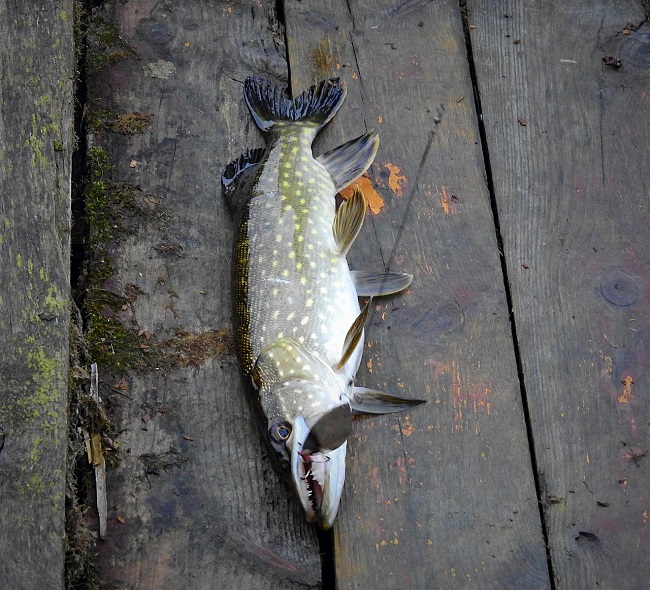
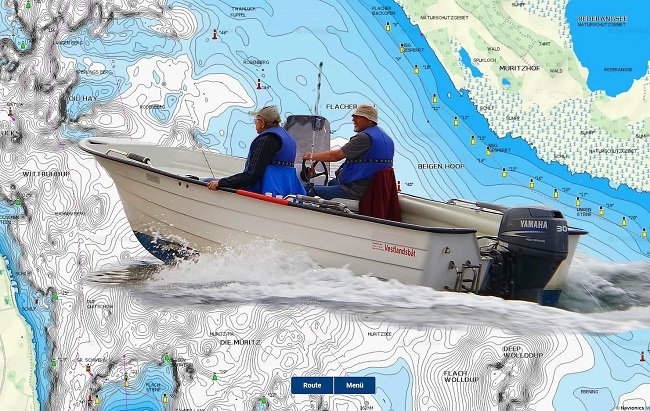
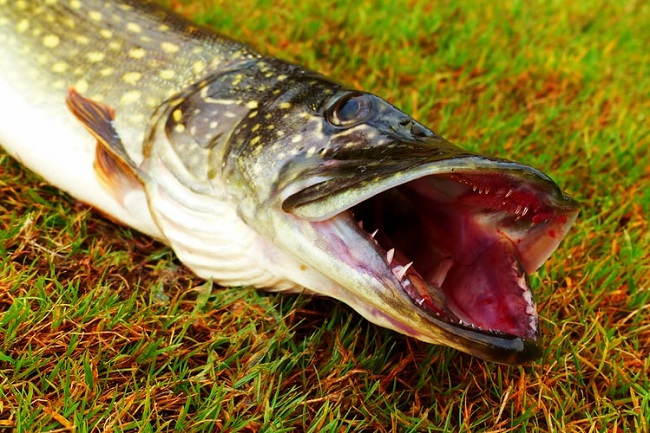
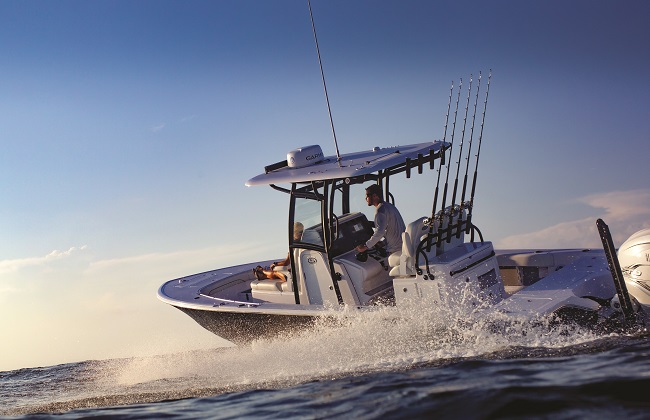
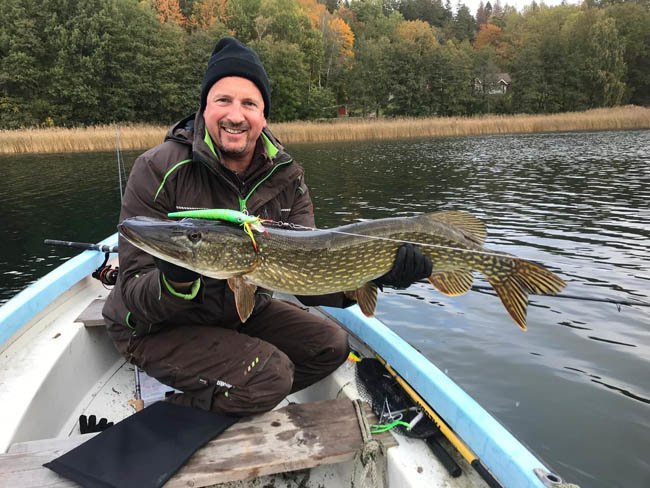
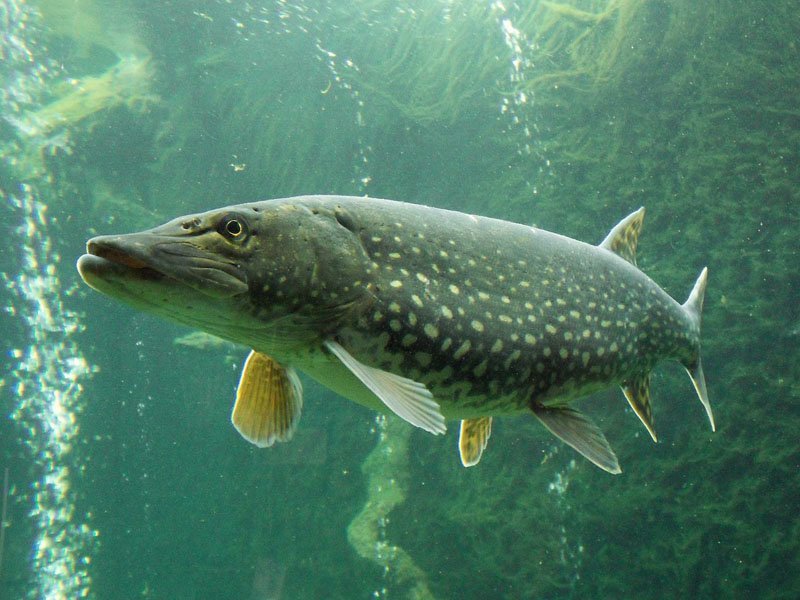
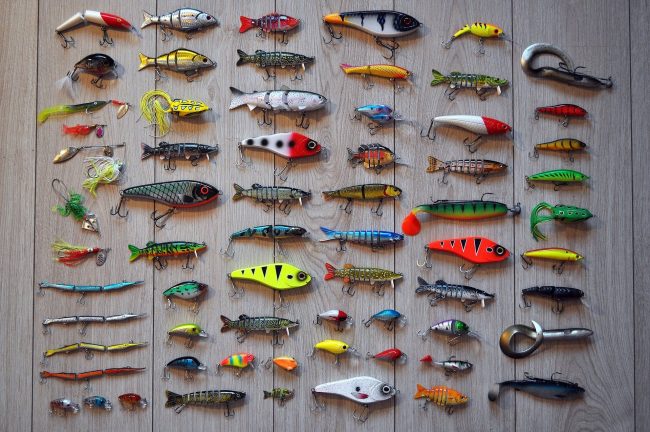
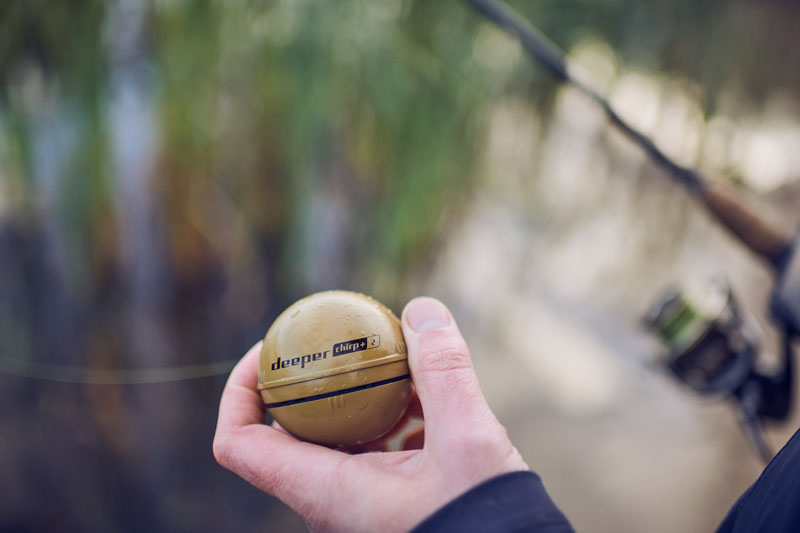

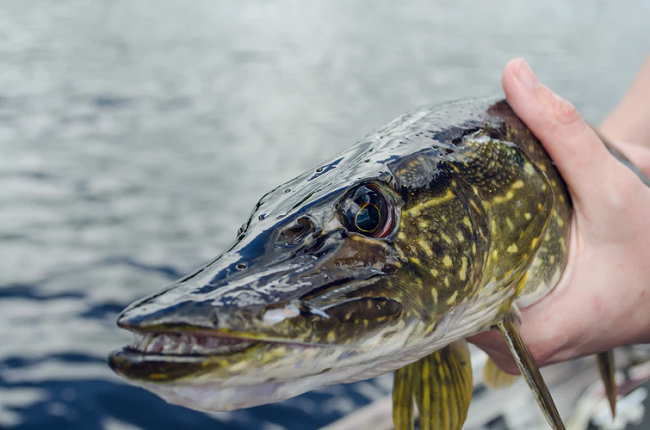
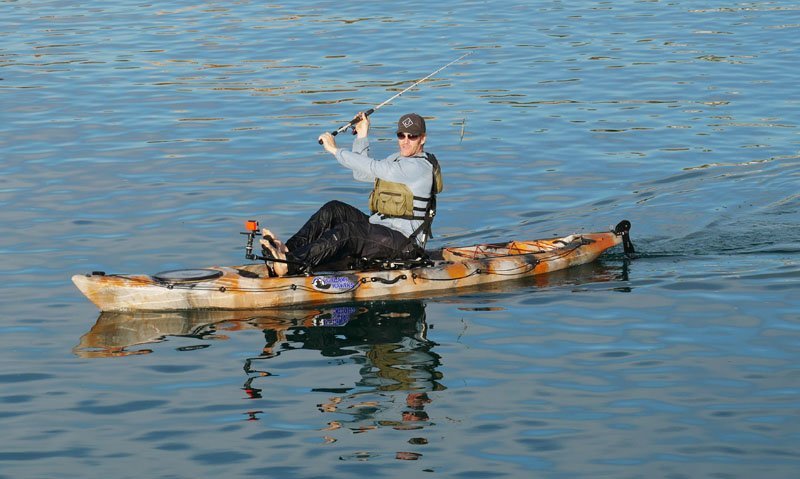

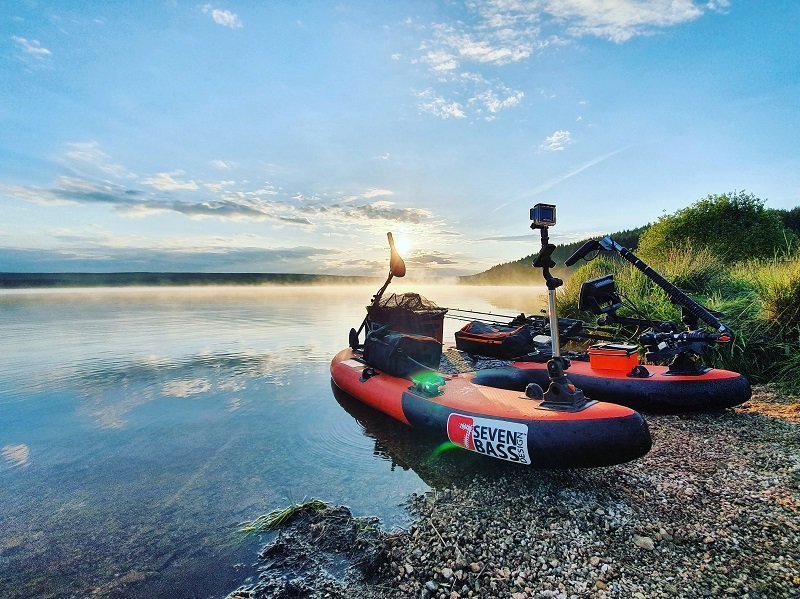
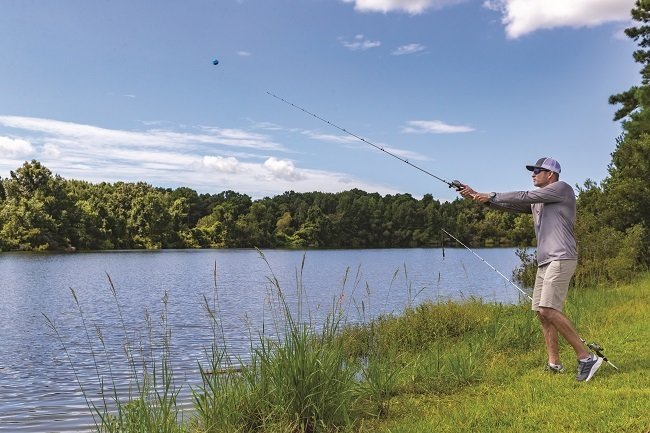
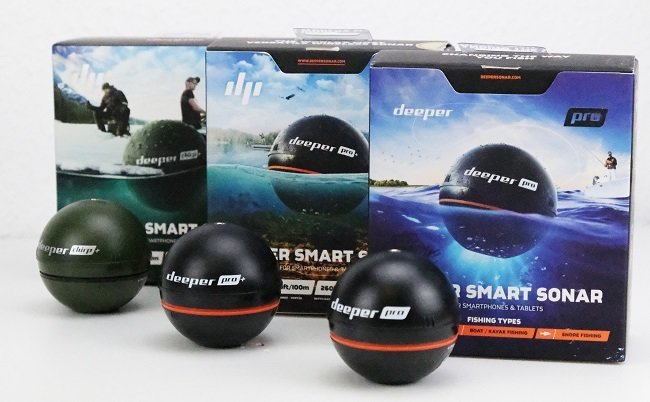

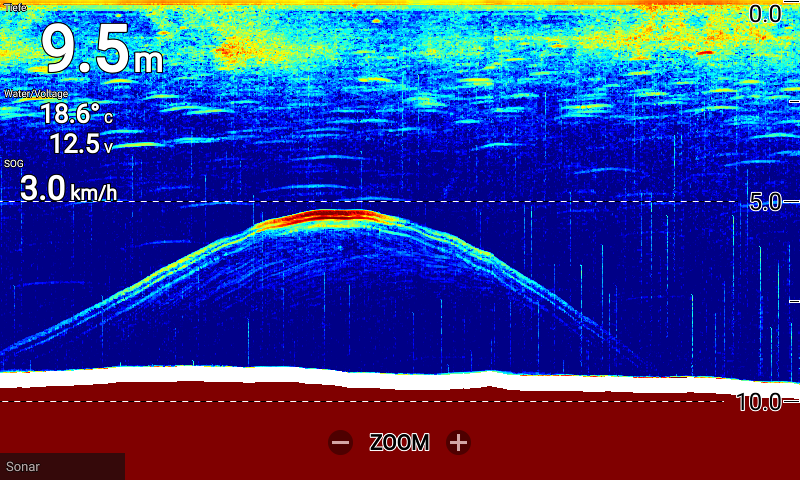
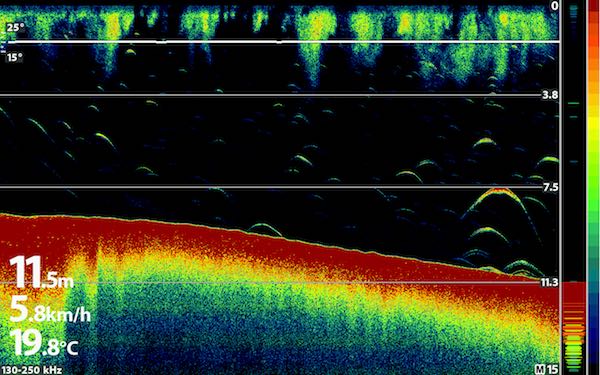
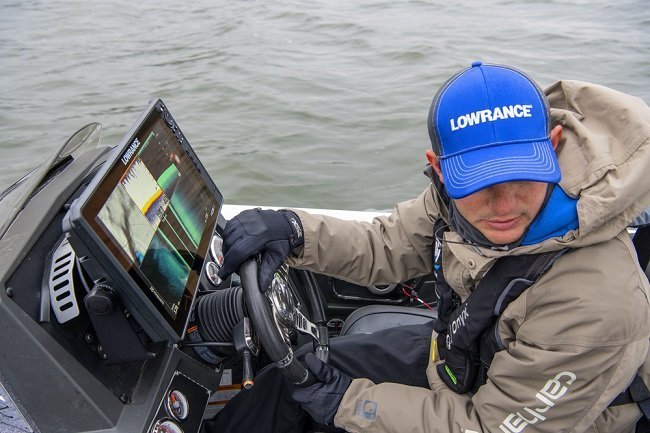
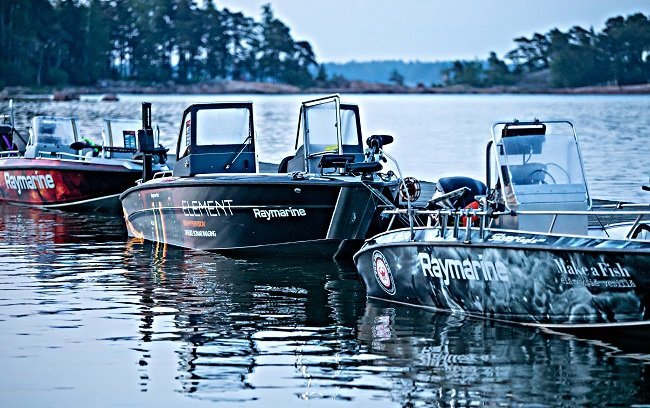
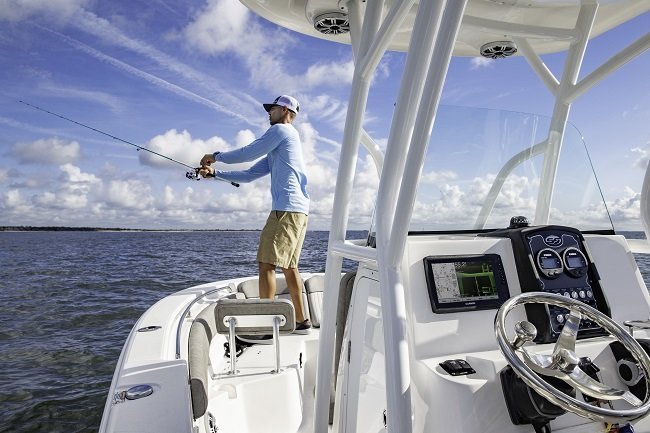


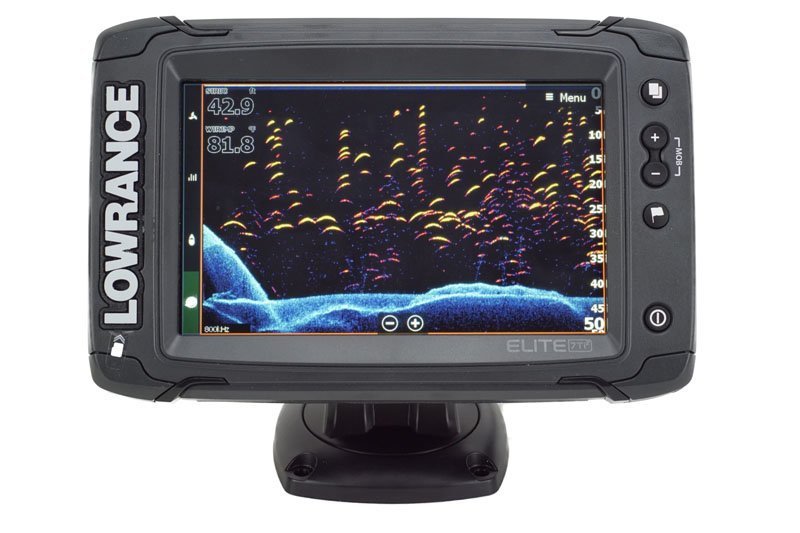
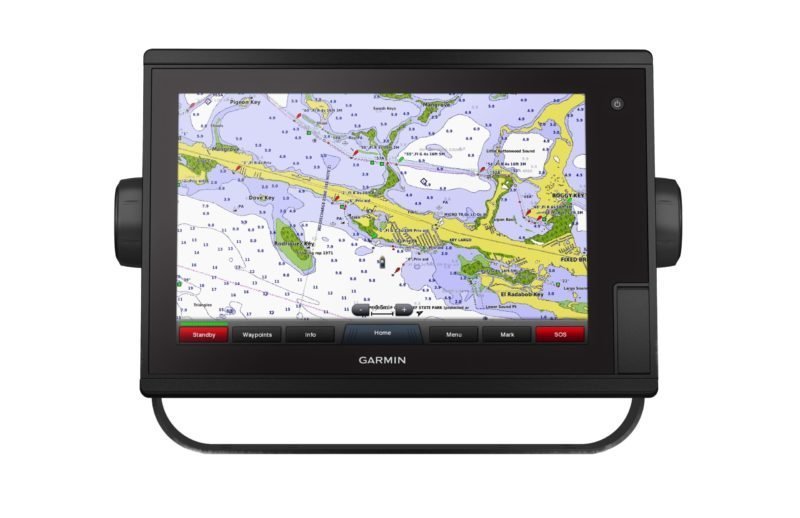

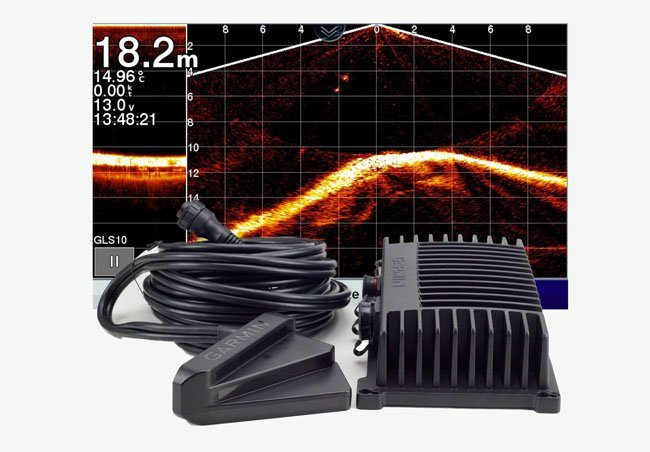
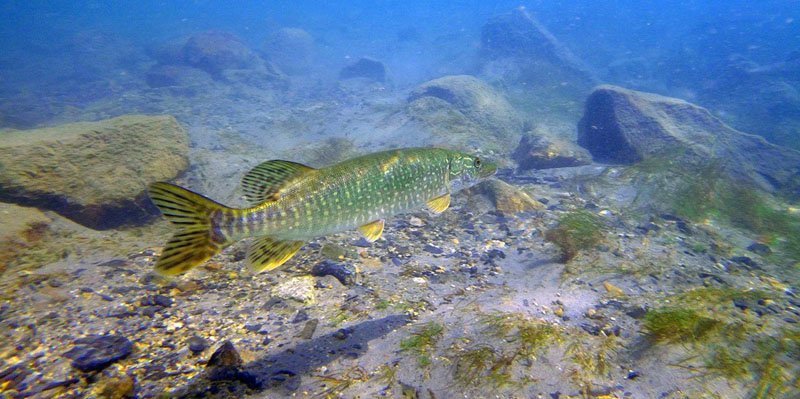
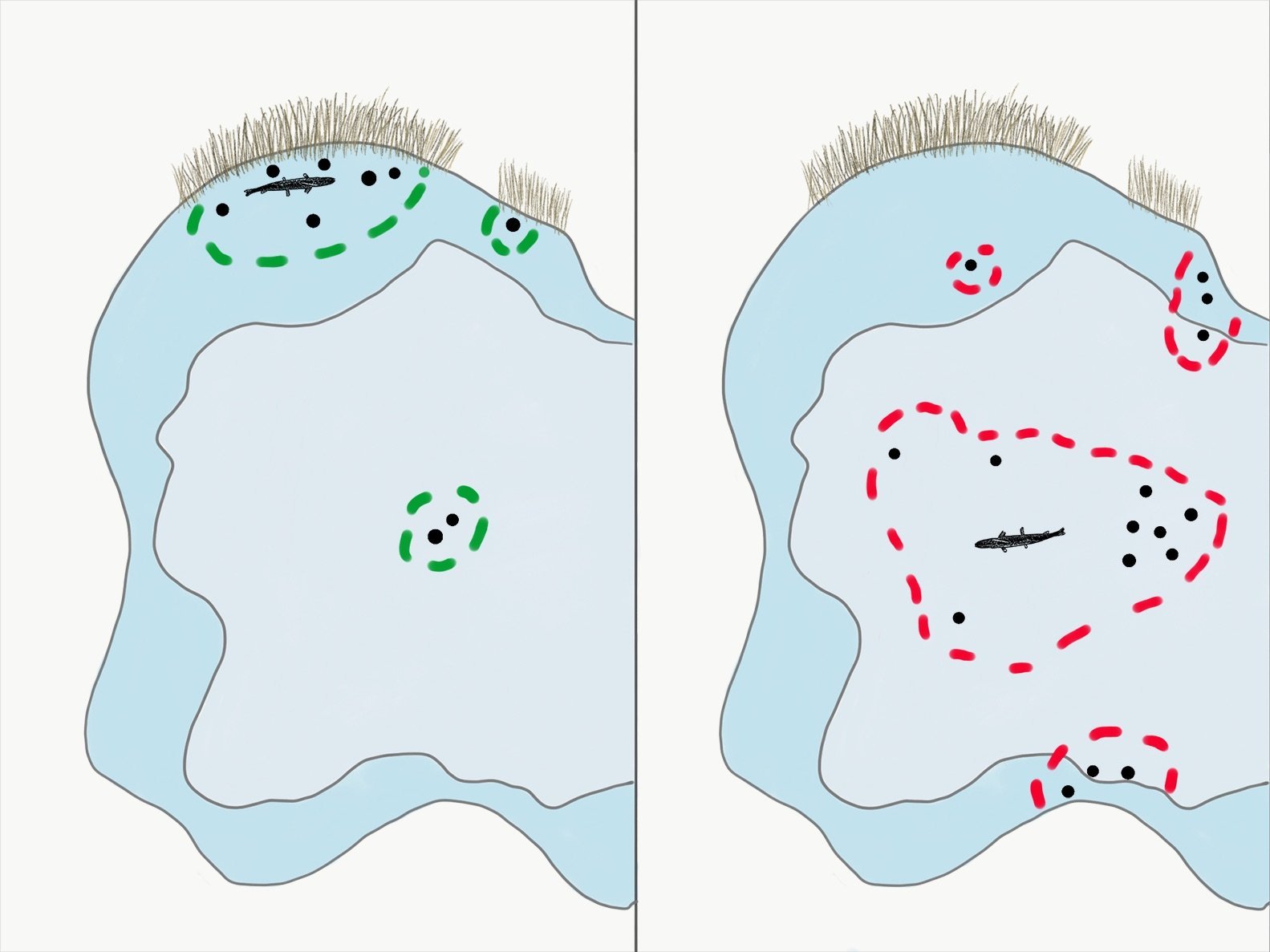
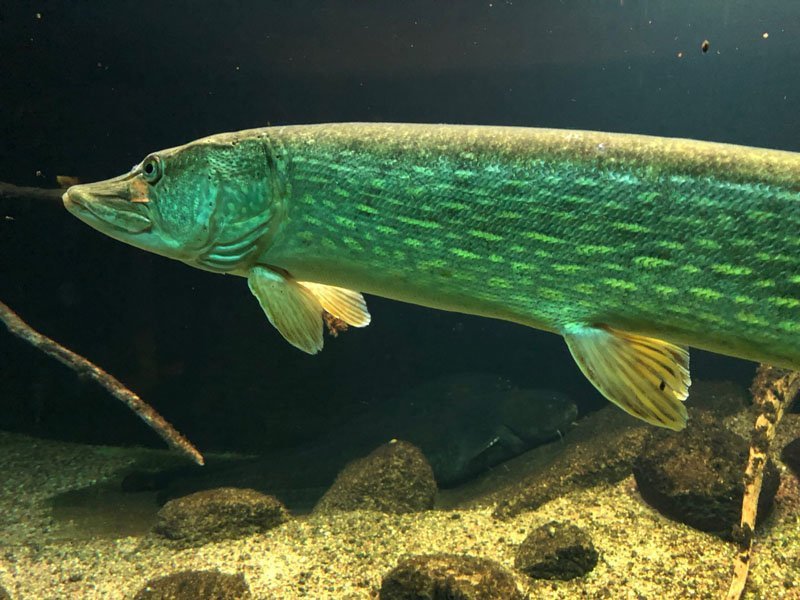
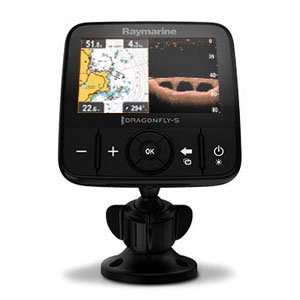
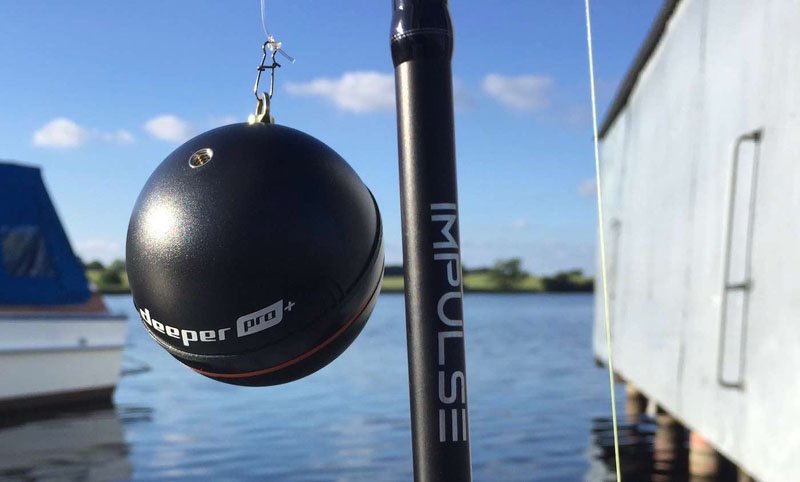
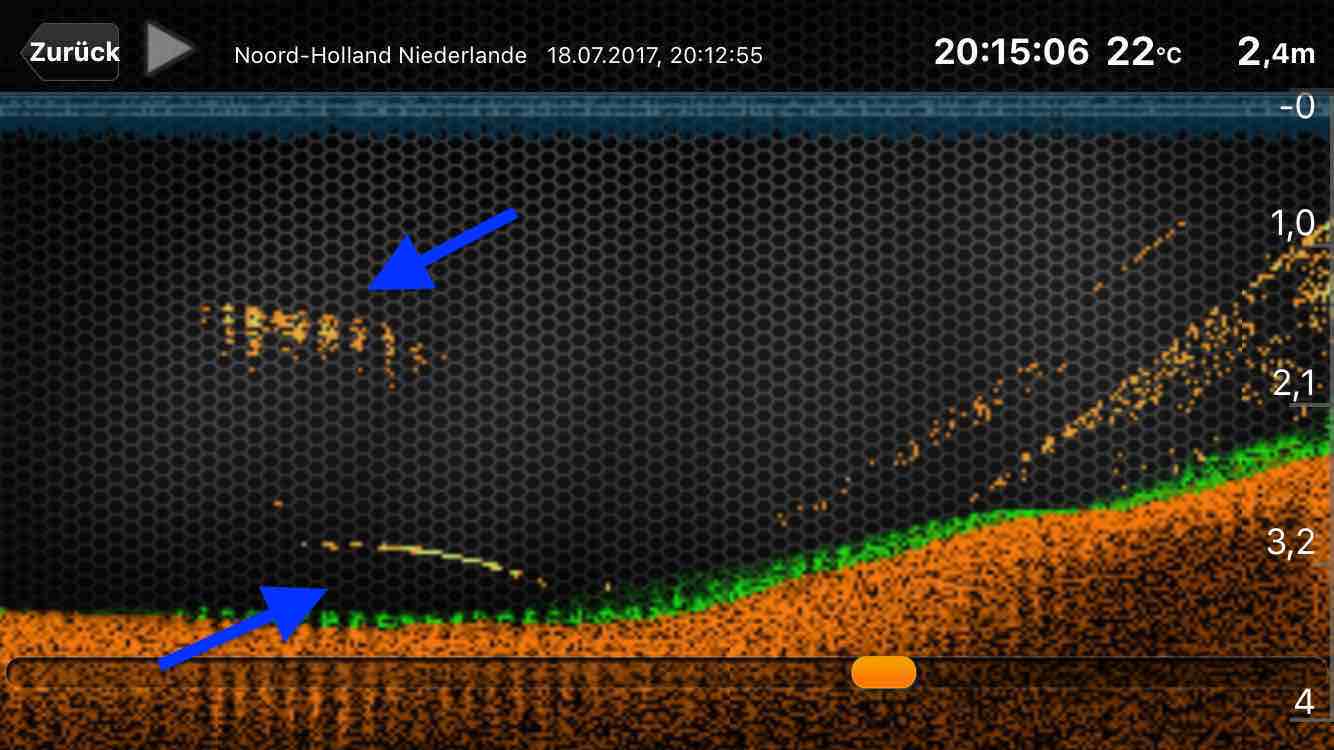
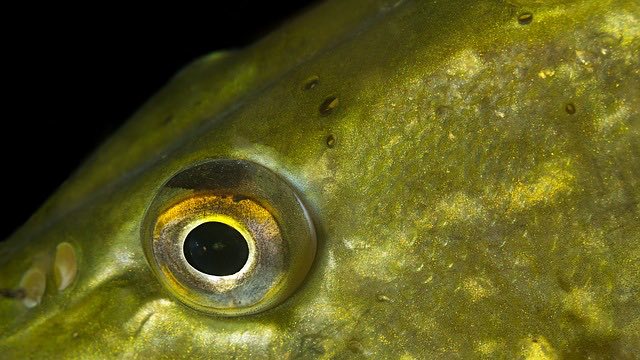


Martin
Garry Gregg
Andreas Eden
Martin
Claus Erhard
Dieter Gundacker
Kurt Sattler
Mirko
Holzblinker
Bruno
Stefan
Fischfreund
Paul KraUS
barney1at
Michael Hügel
frankadam67
Thomas Asamer
Andre Scholz
Manfred Parbs
Fabius Voigt
Julia
Pascal Schlenker
Heinz-Otto Schoel
Andreas Hillers
Stephandargel
Rolf Wilde
Blankmaster
Rudolf Knopf
markus s
Mitja
schoenfeld.oli
Robert Häusler
Martin
Edi Brader
lusox
Stefan Fischer
Lasse Wiedenhöft
Johann Burgstaller
Barschhunter
Andre Scholz
Andreas F.
Pascal Kreutzmann
Ralf B.
Bickes
opto
Adrian Drzezla
Evgenij
Daniel
Jörg
Dirk Lindner
Jörg Thielke
Stefan Klingbeil
Jörg Rolle
Philipp
Ben
Nico Drabner
Kuhnert Giso
David Götze
Peter
Ben
Kantor Alfred (Hatschi)
Patrick
Tacklefever
Andreas
Wolfgang Konter
Catchmaster
Jörg Rolle